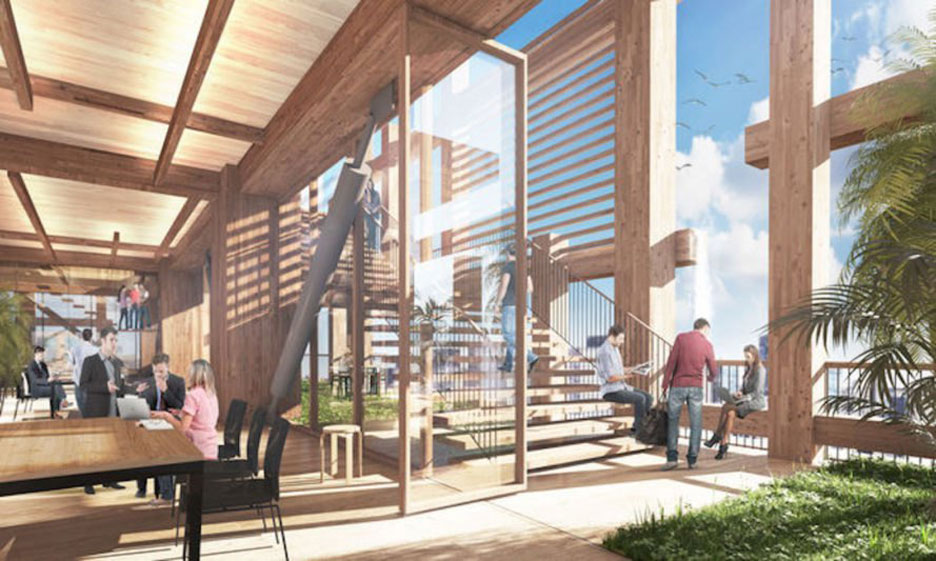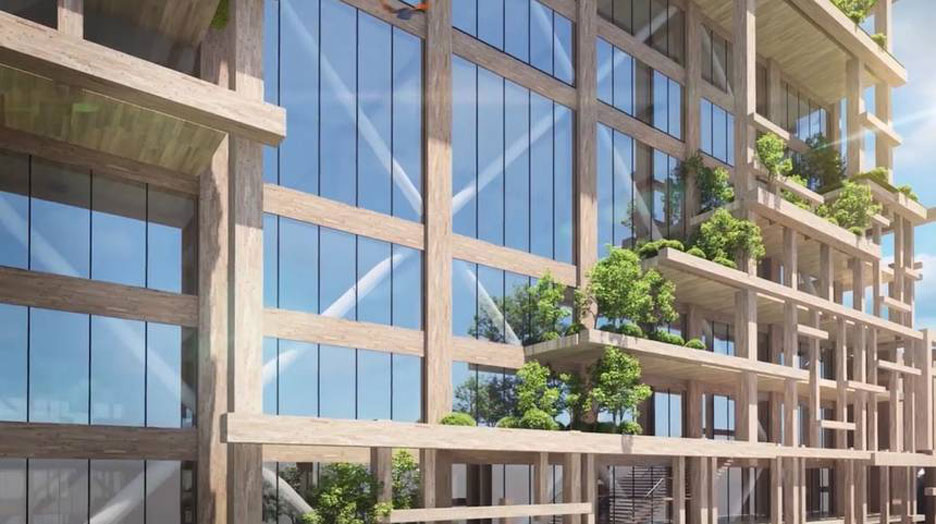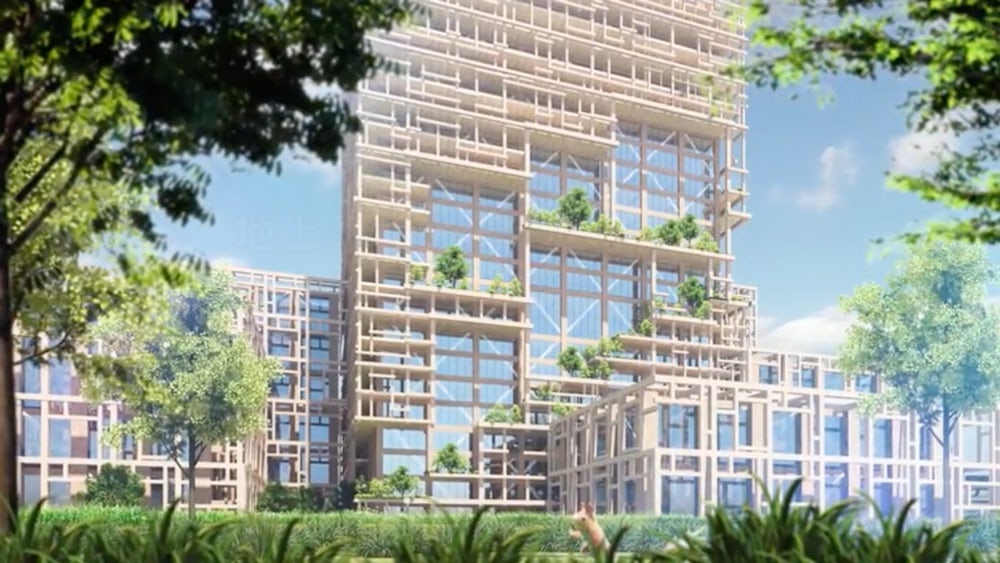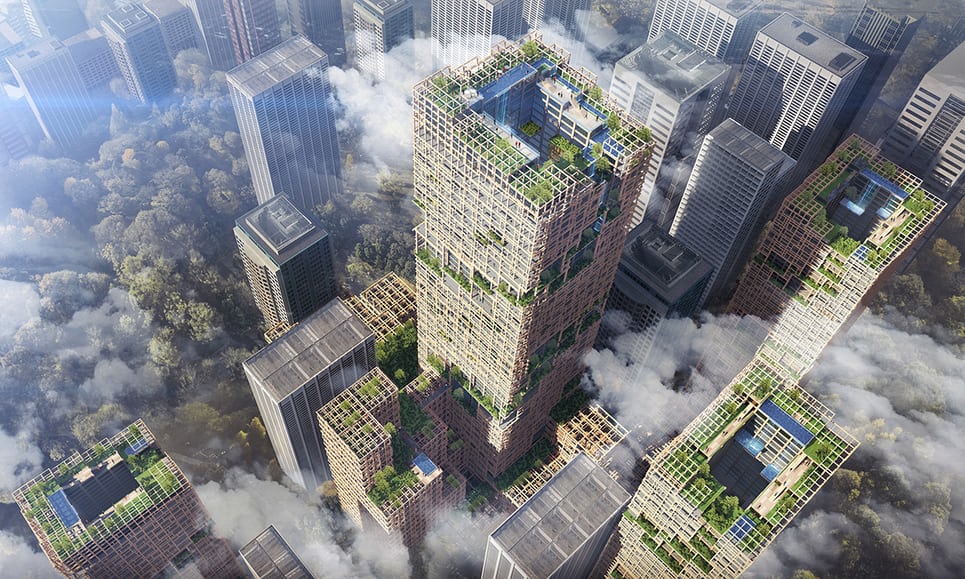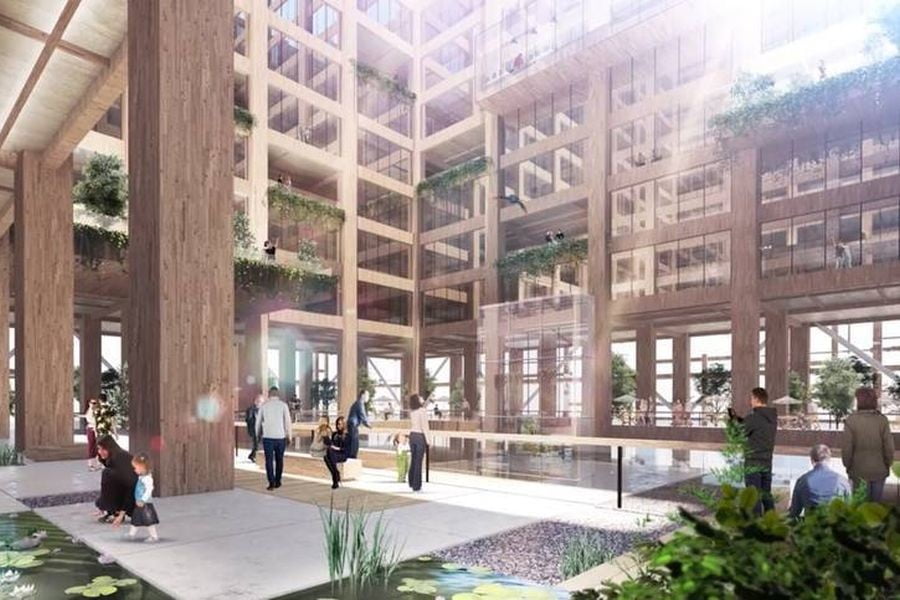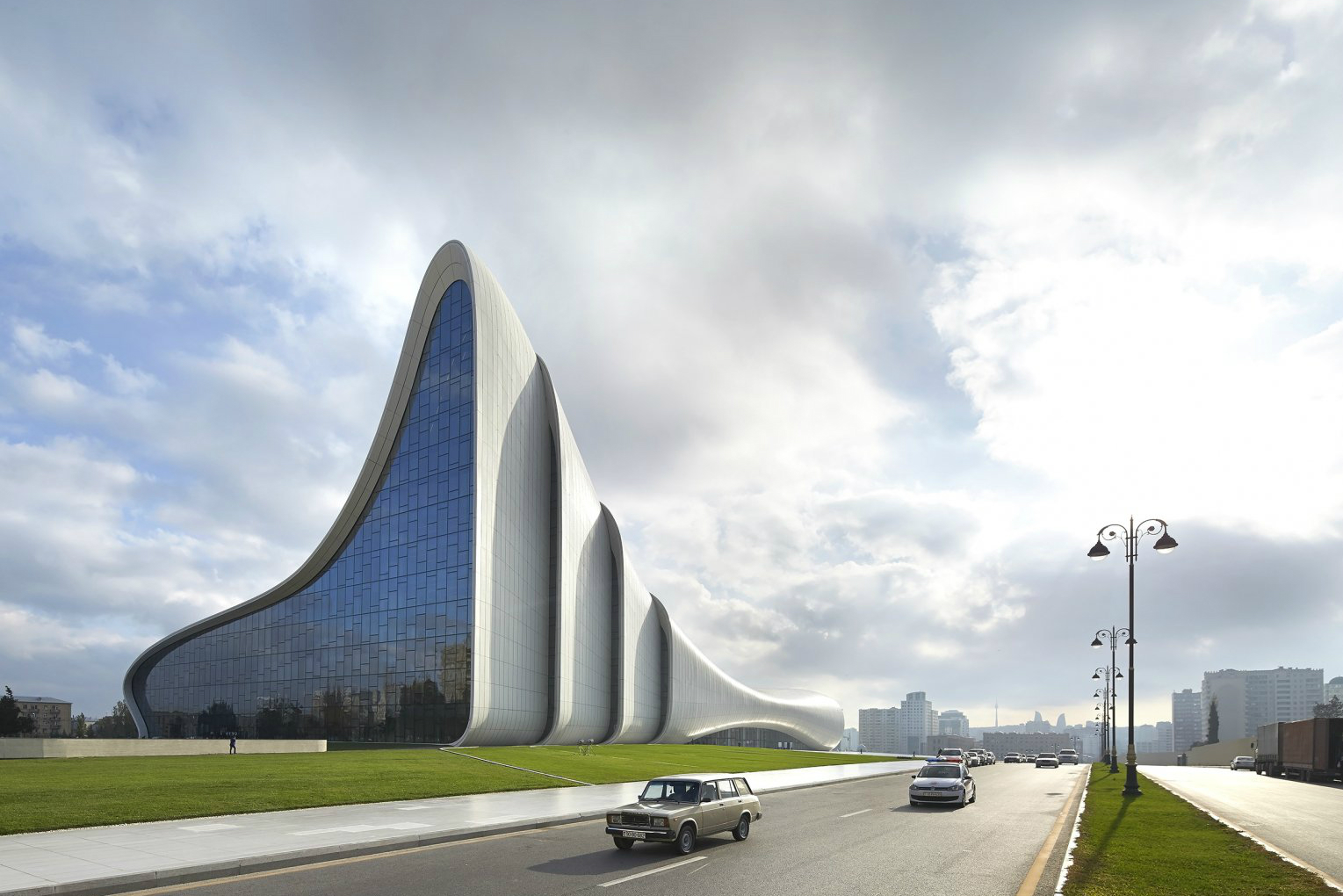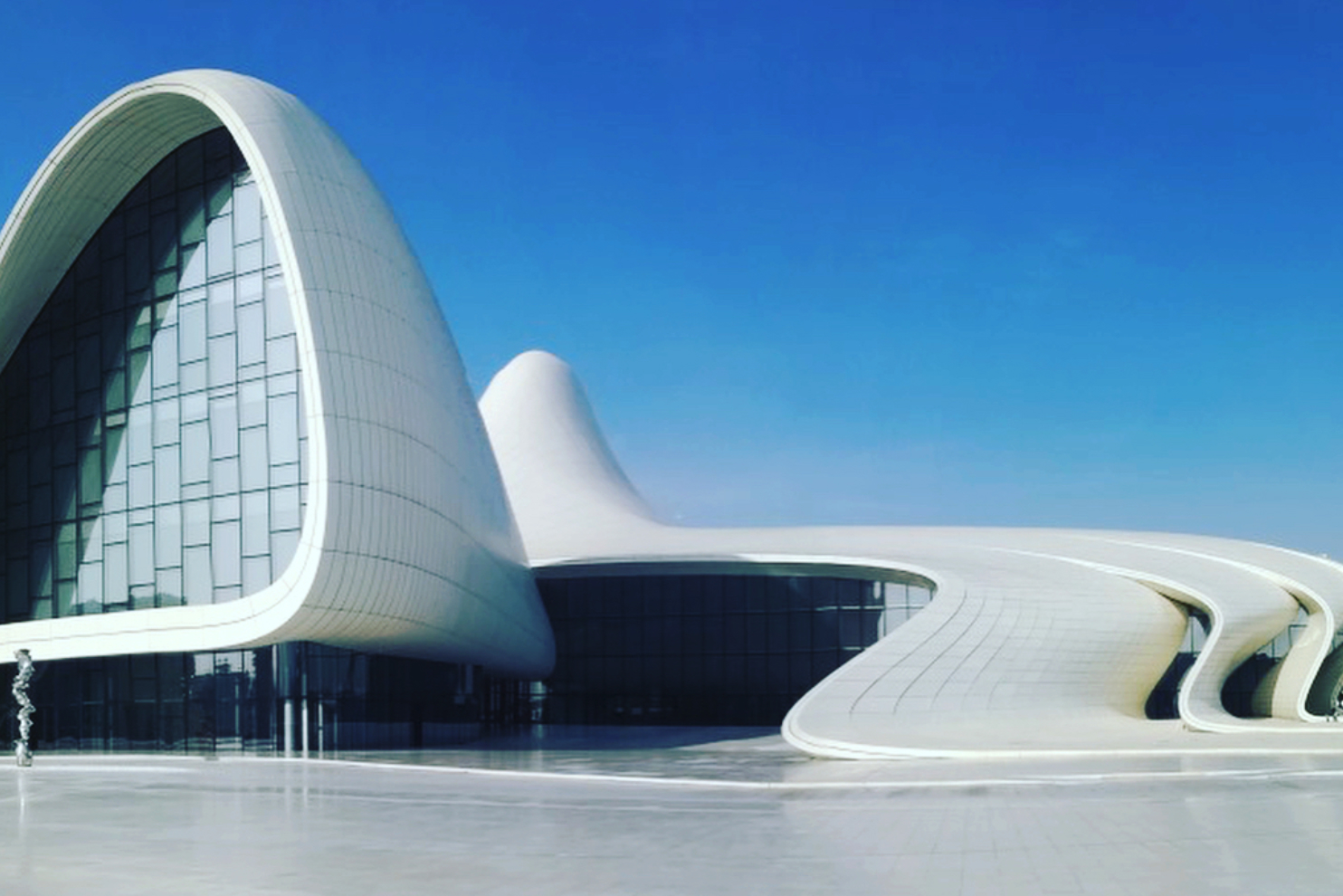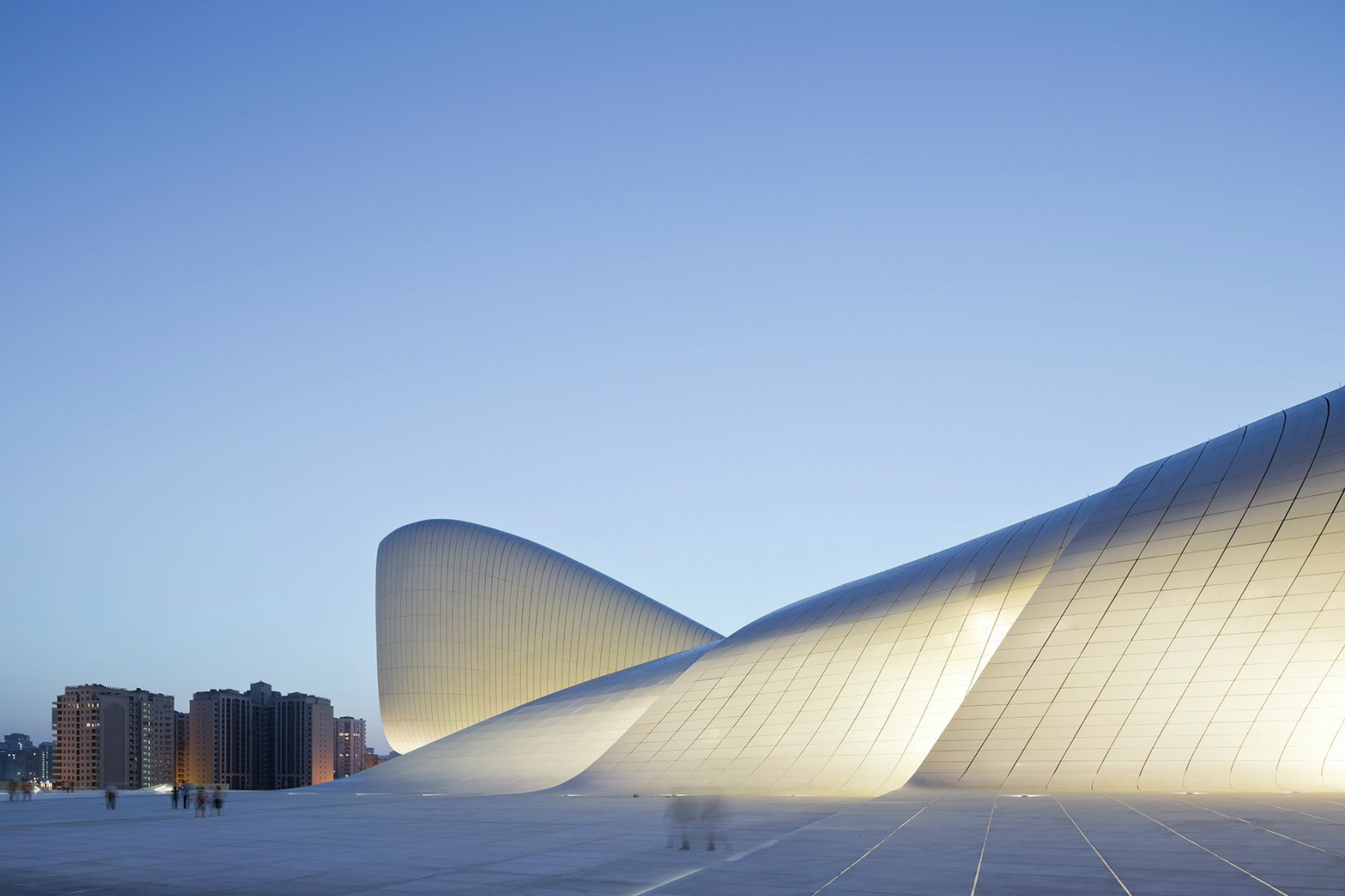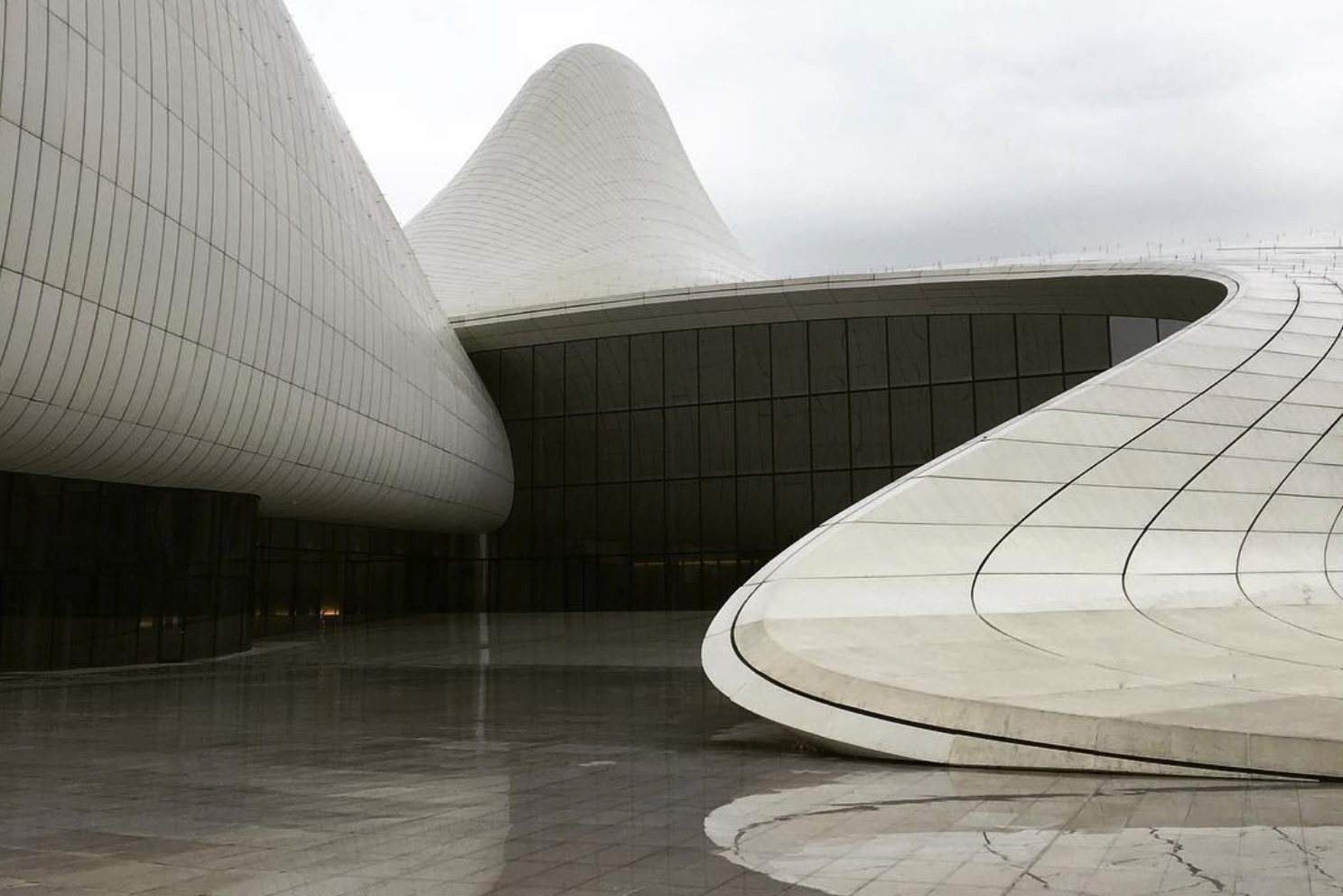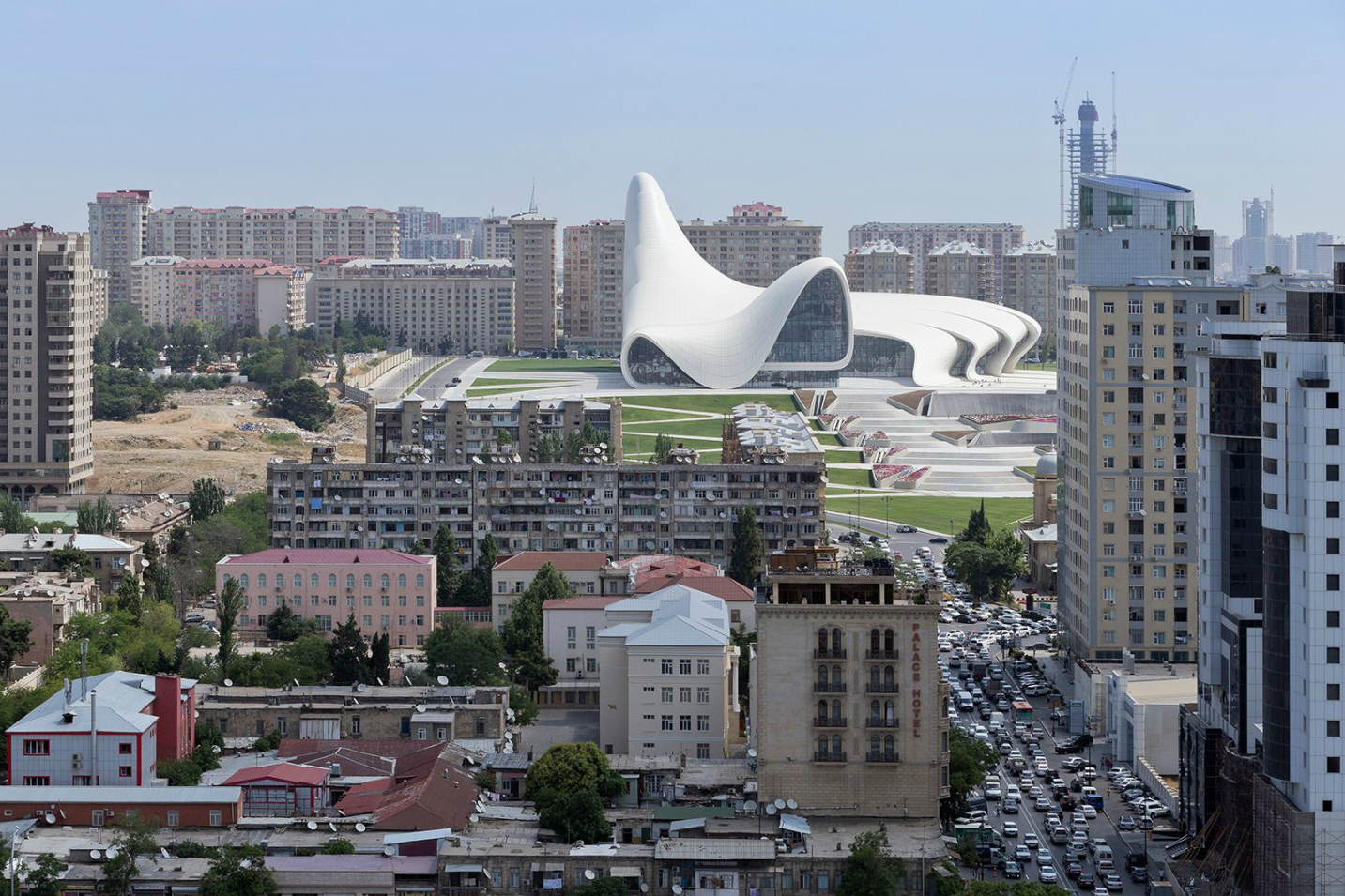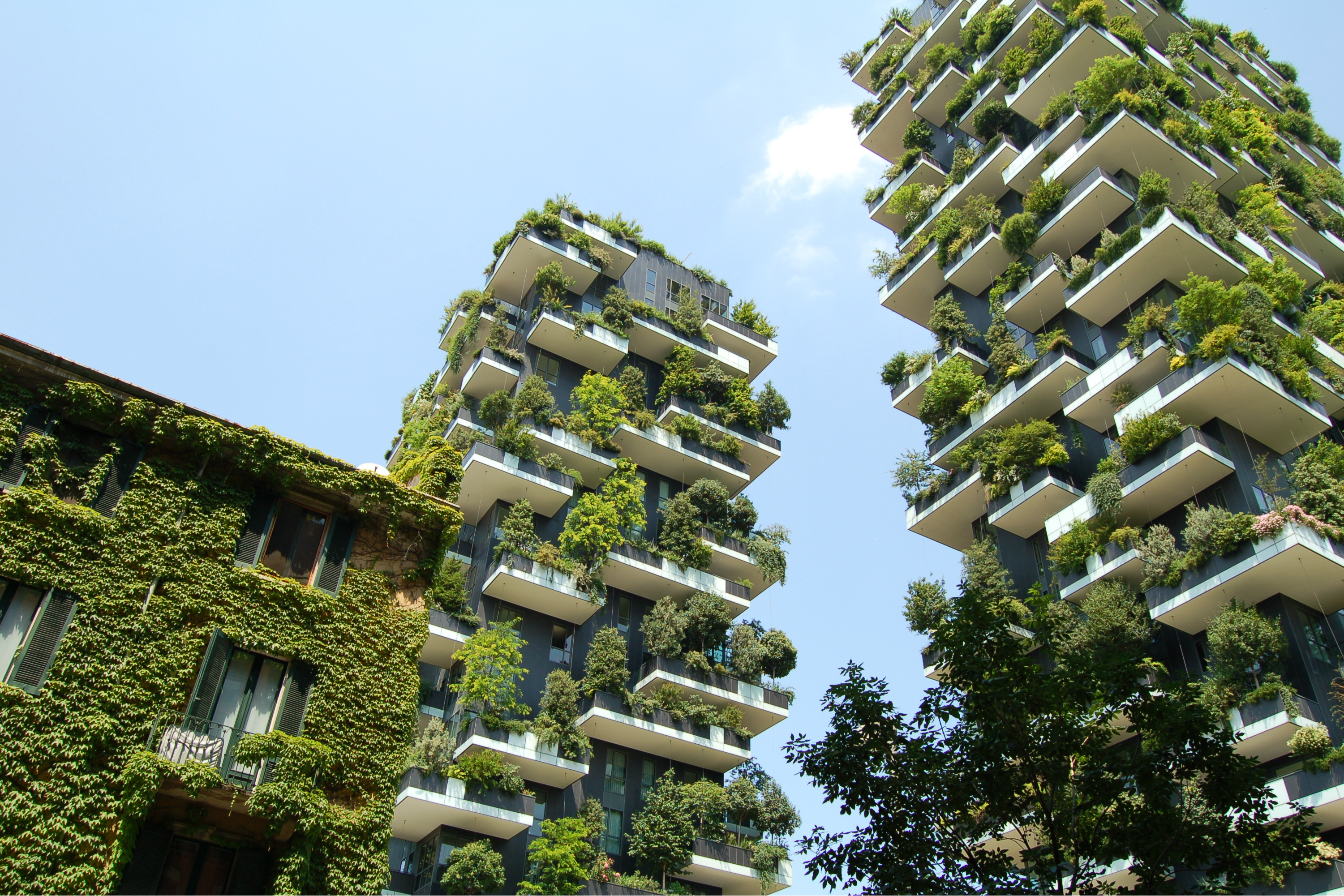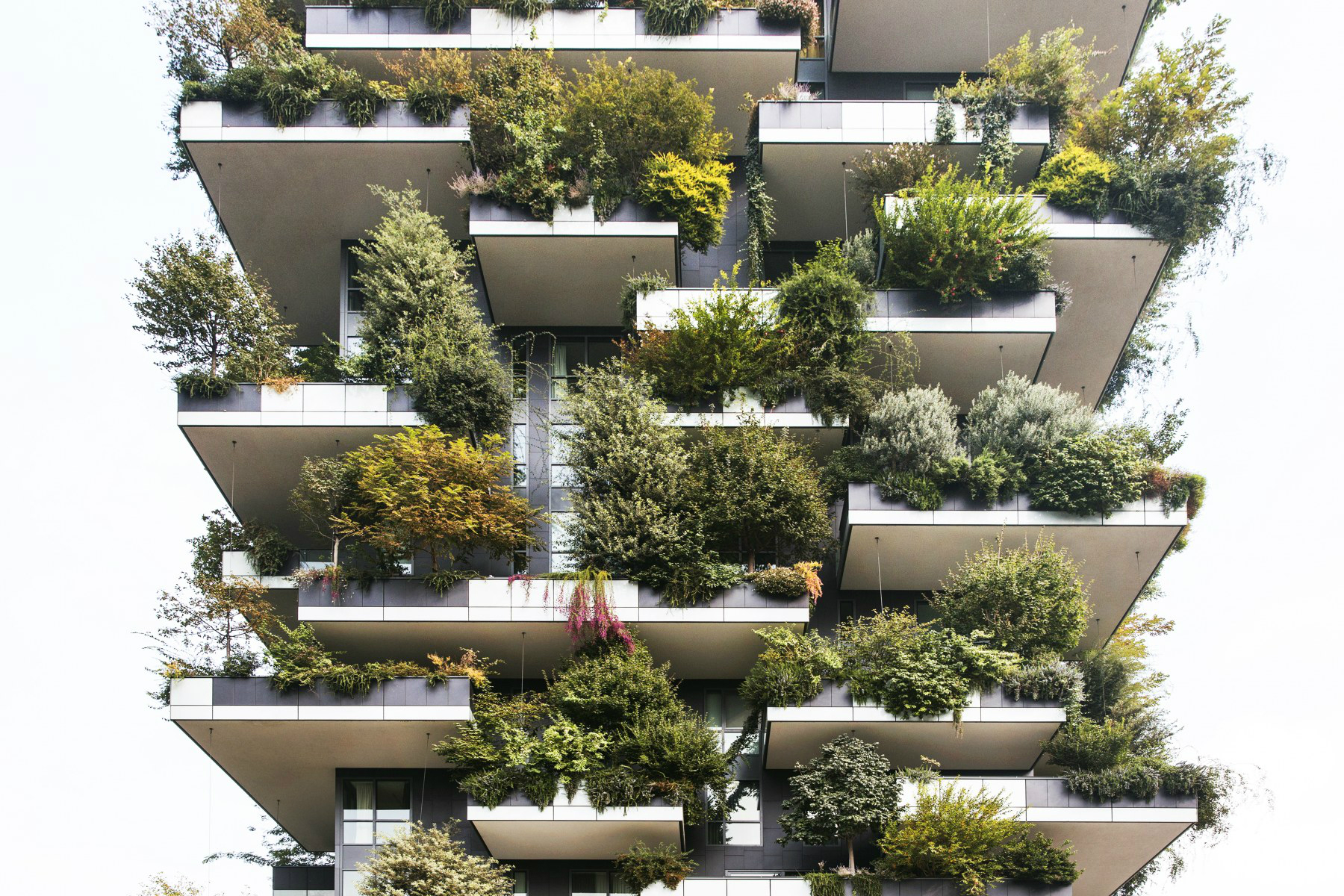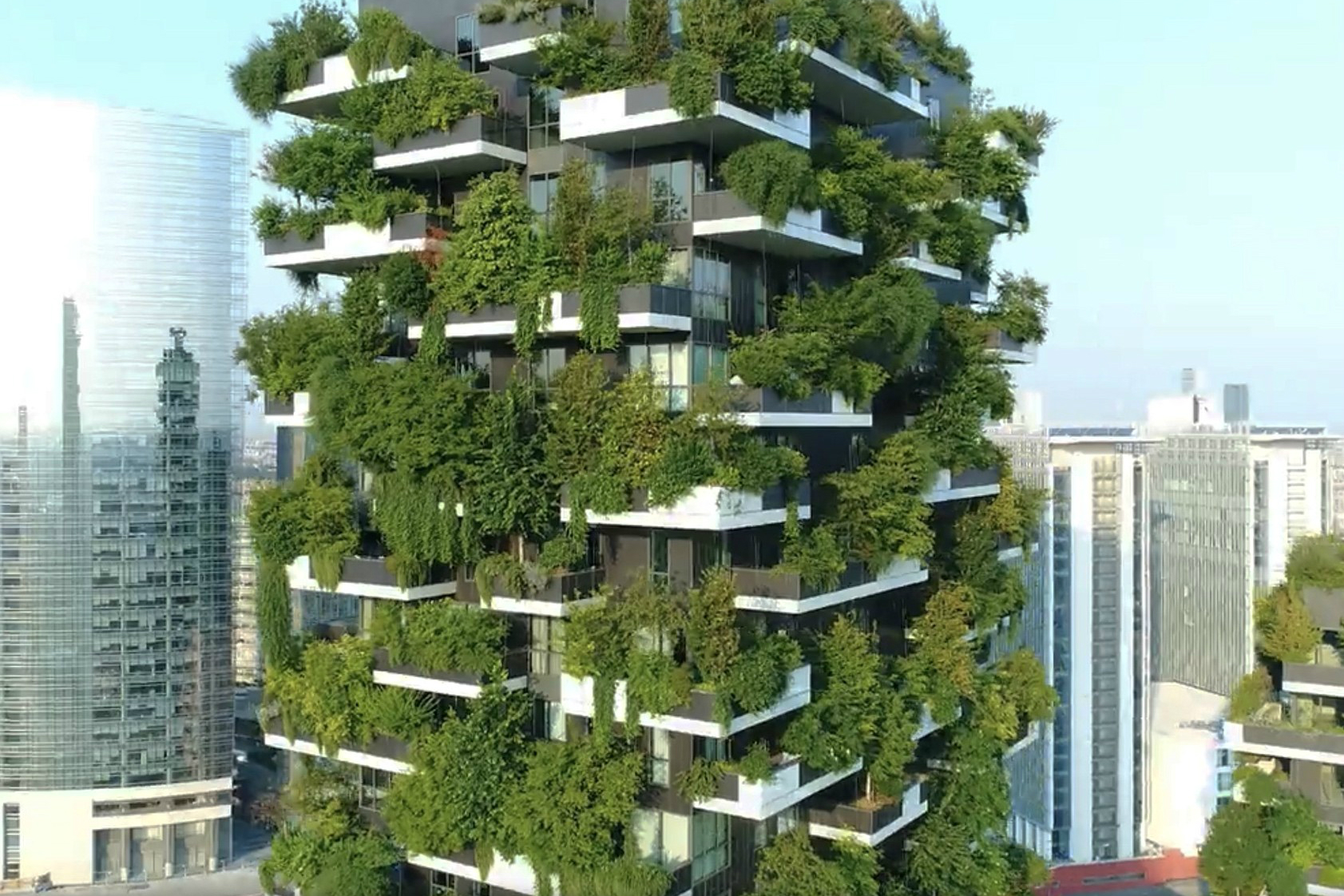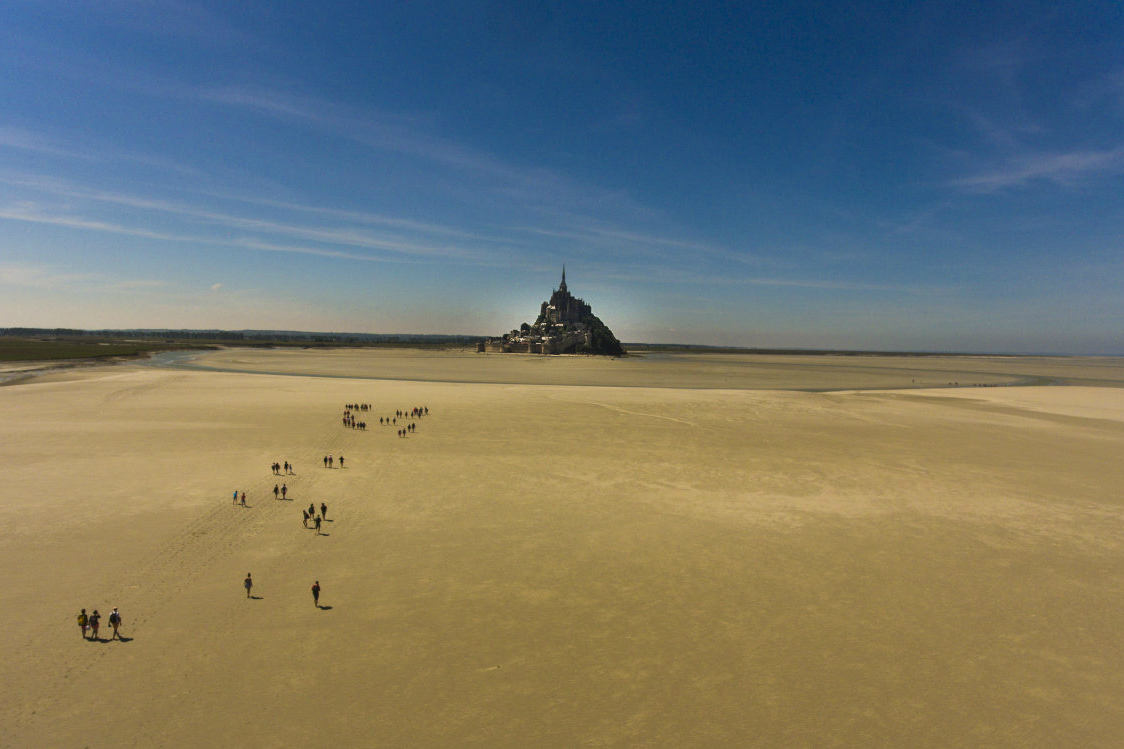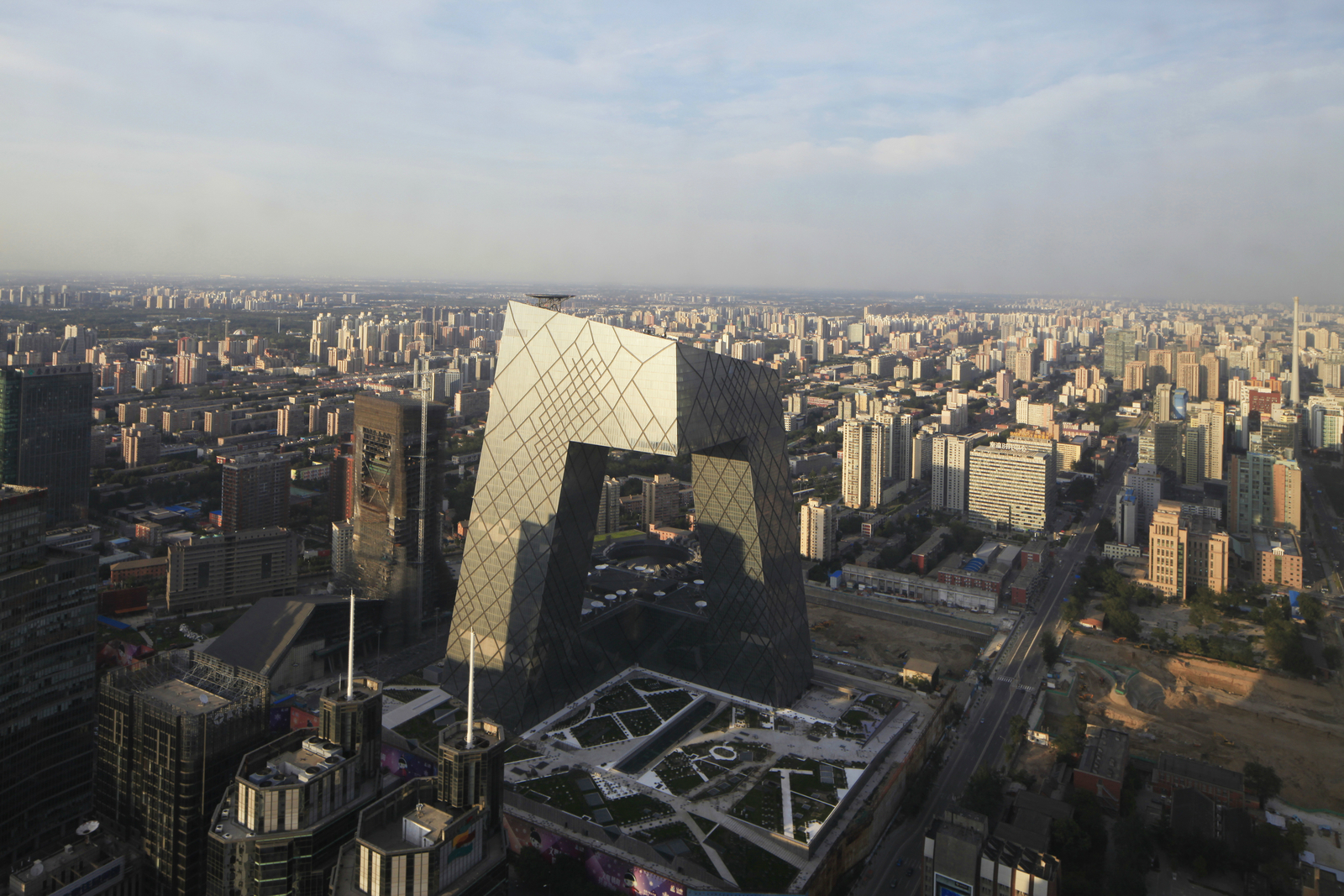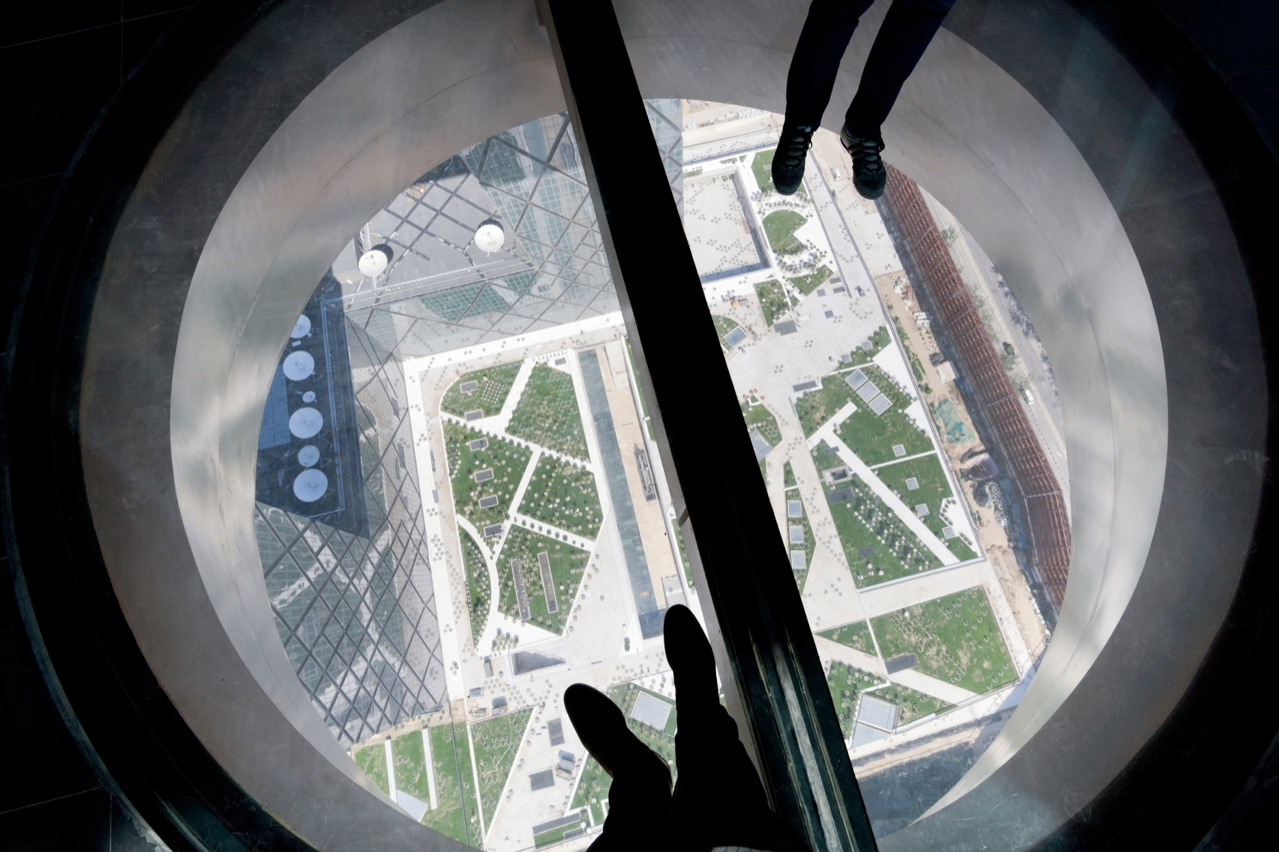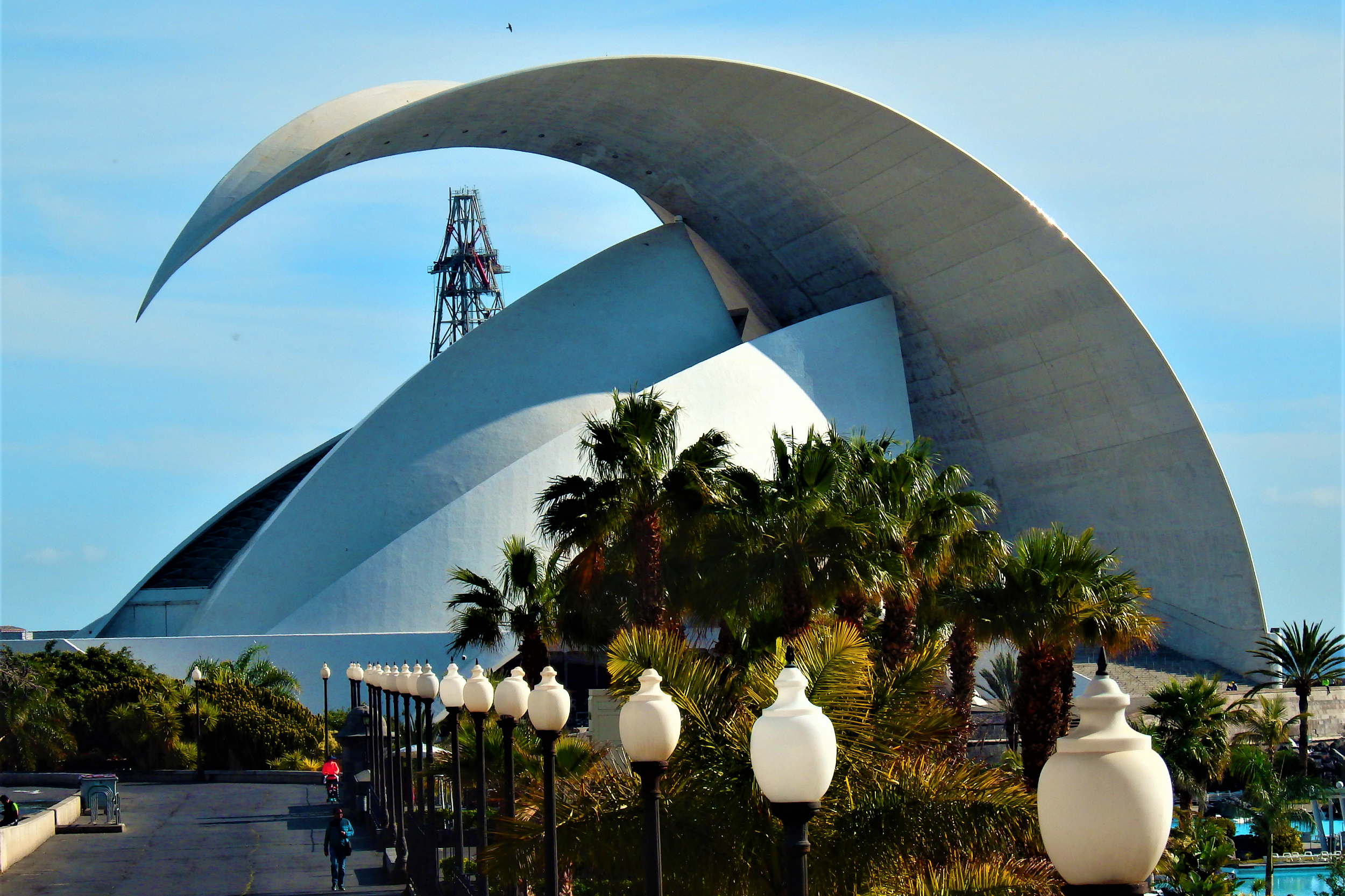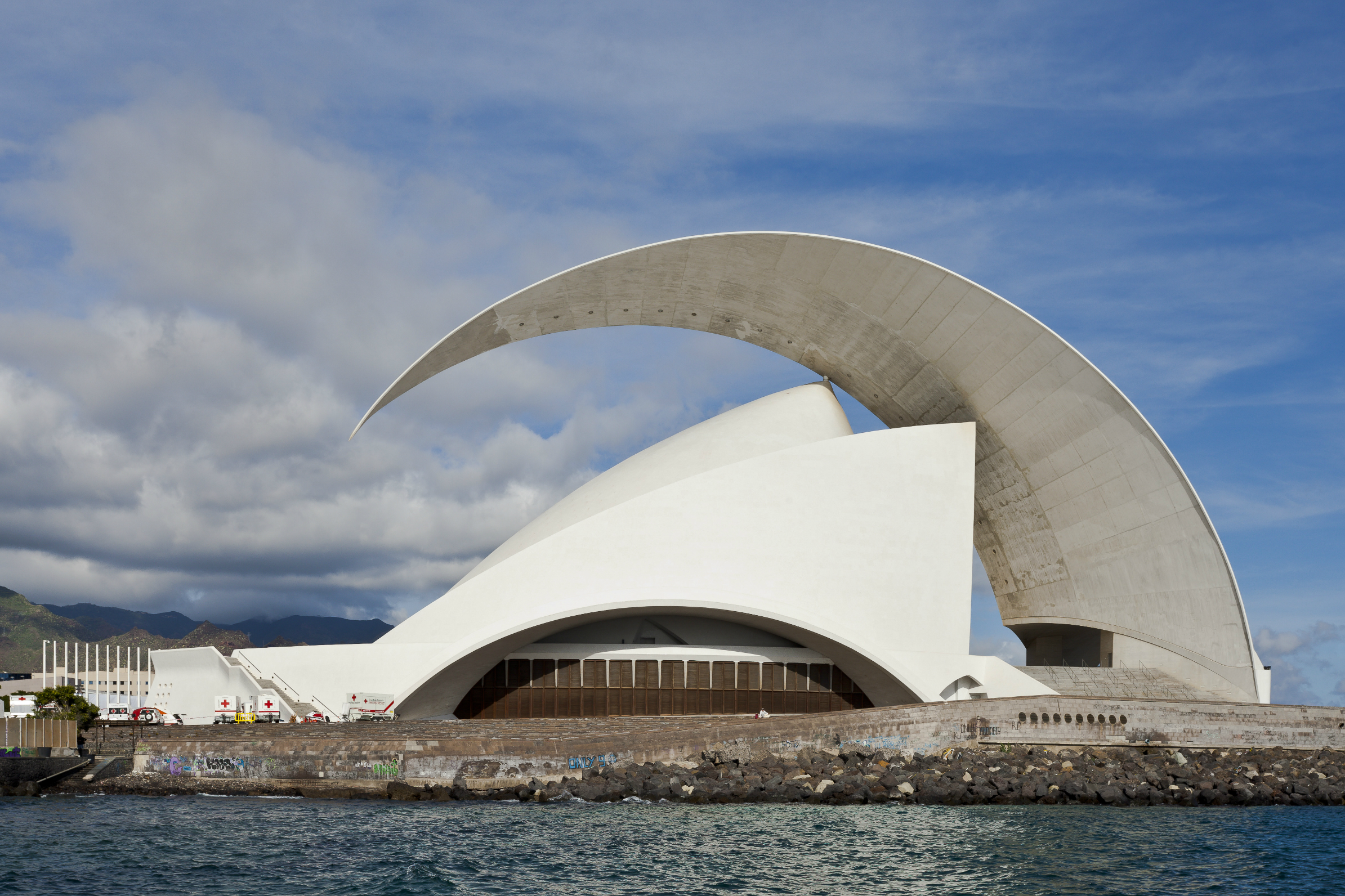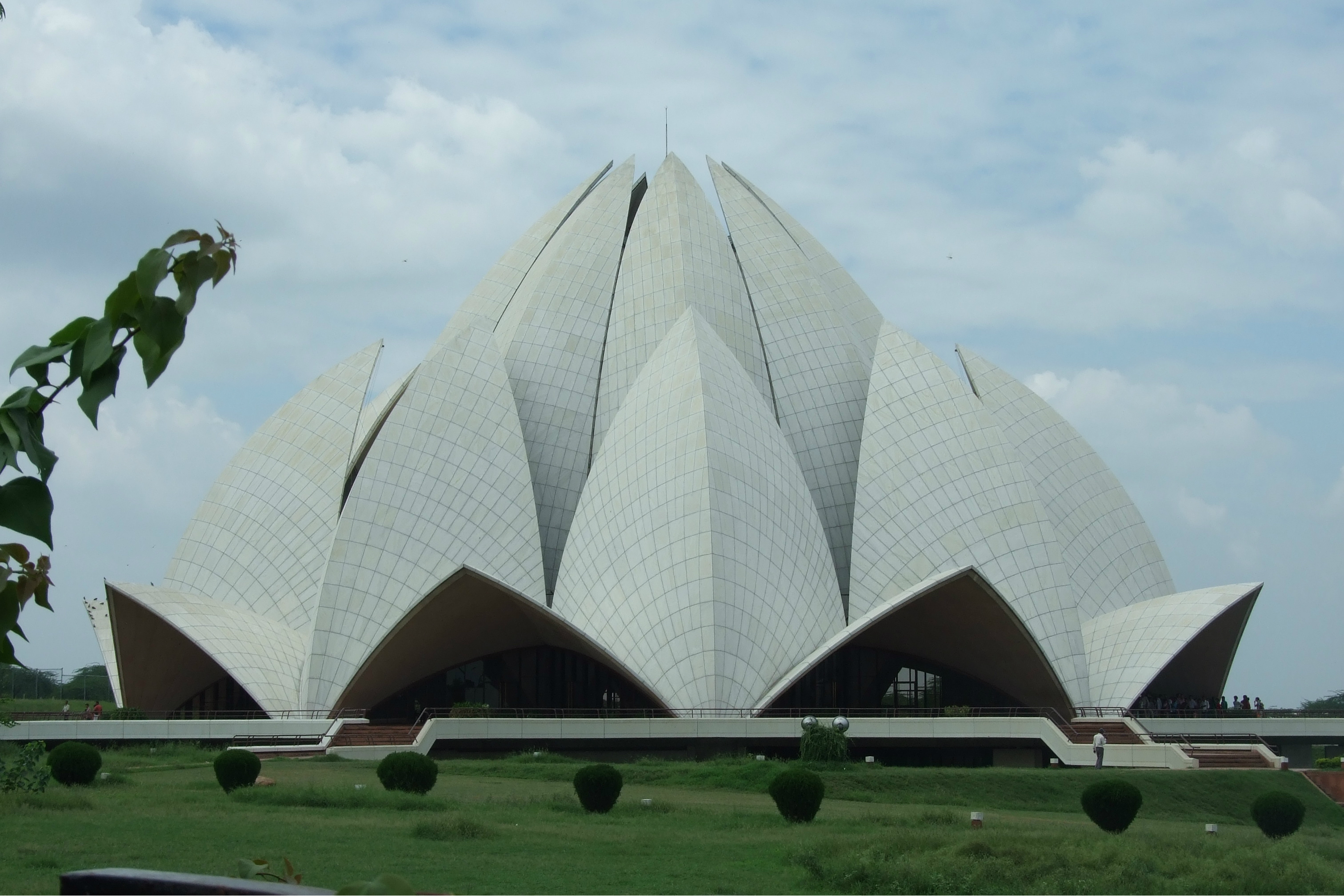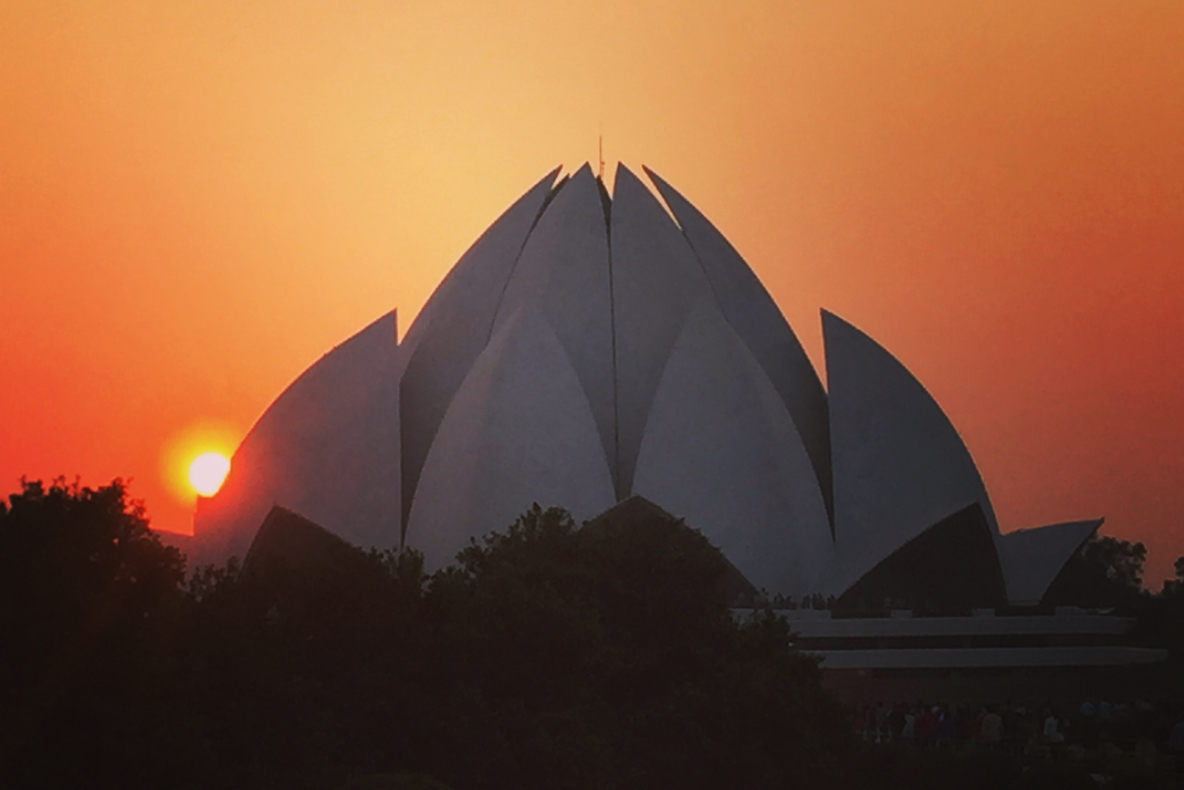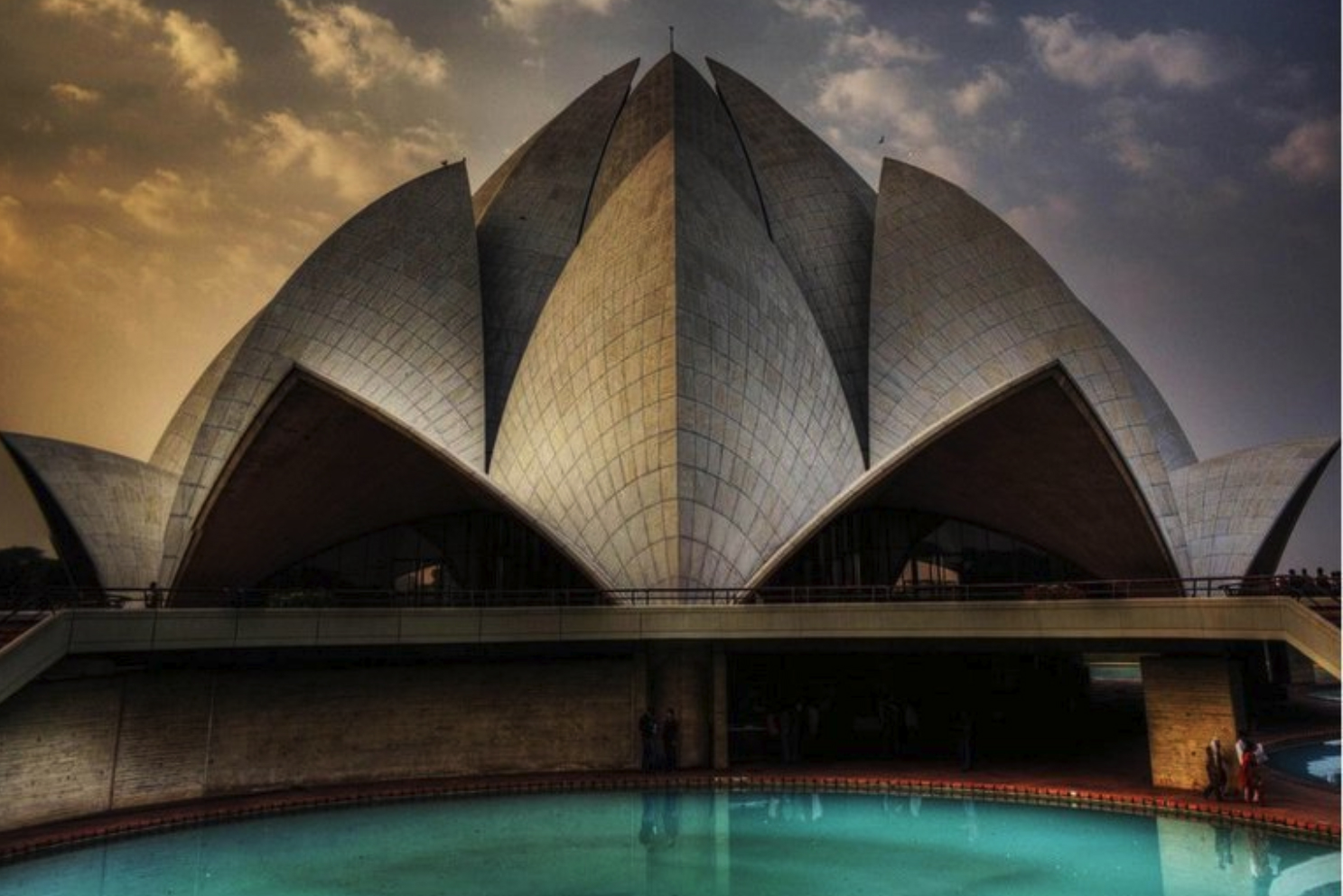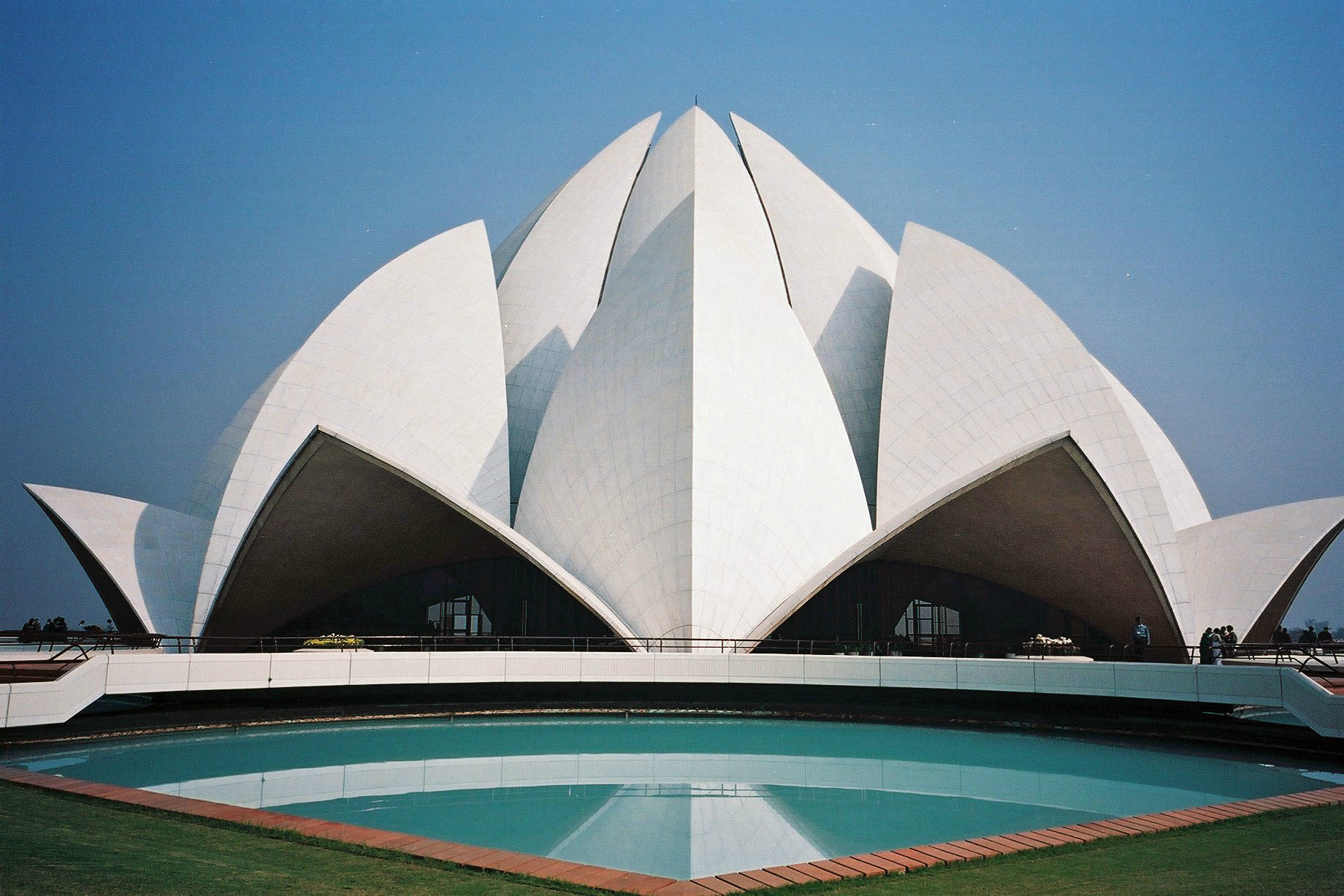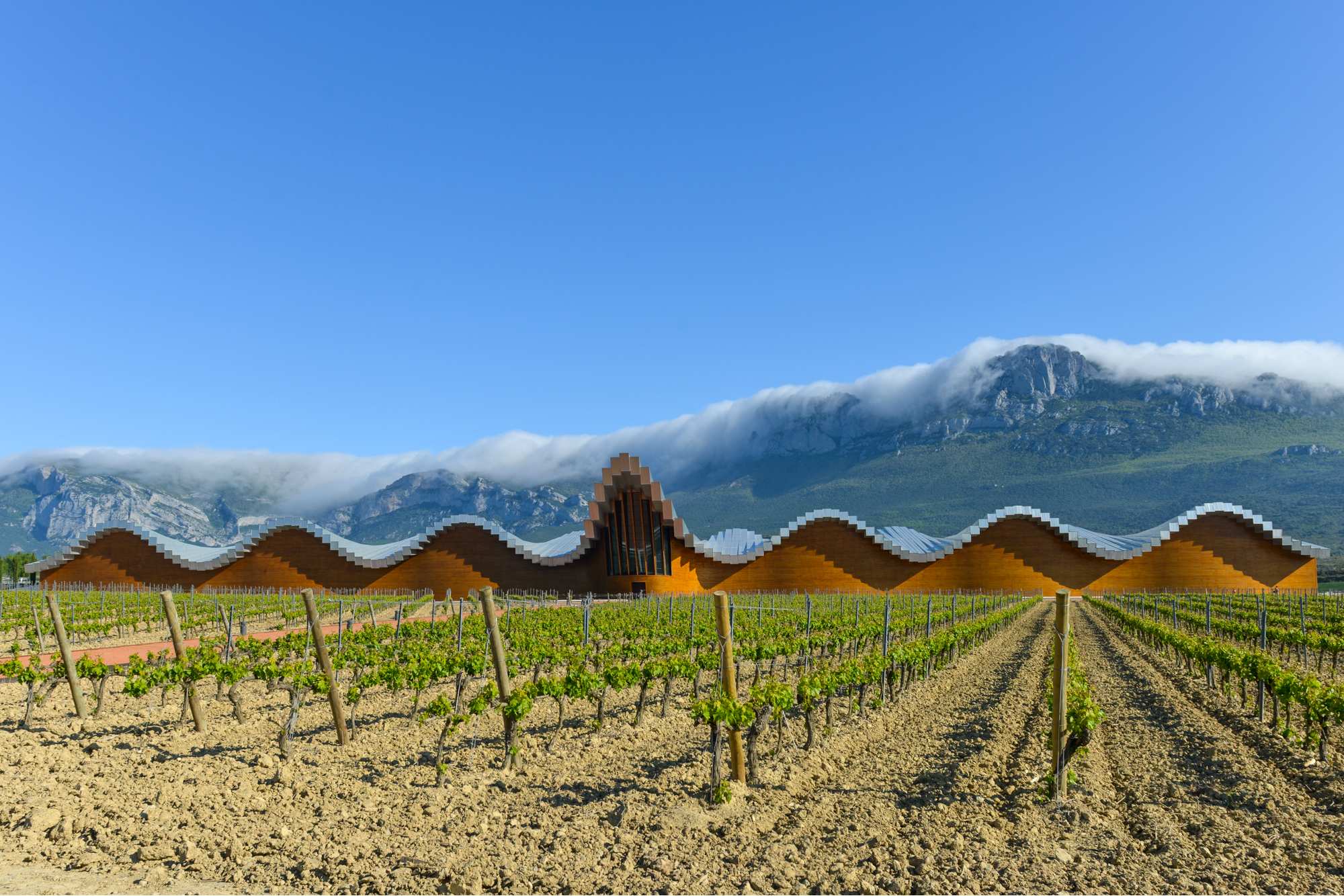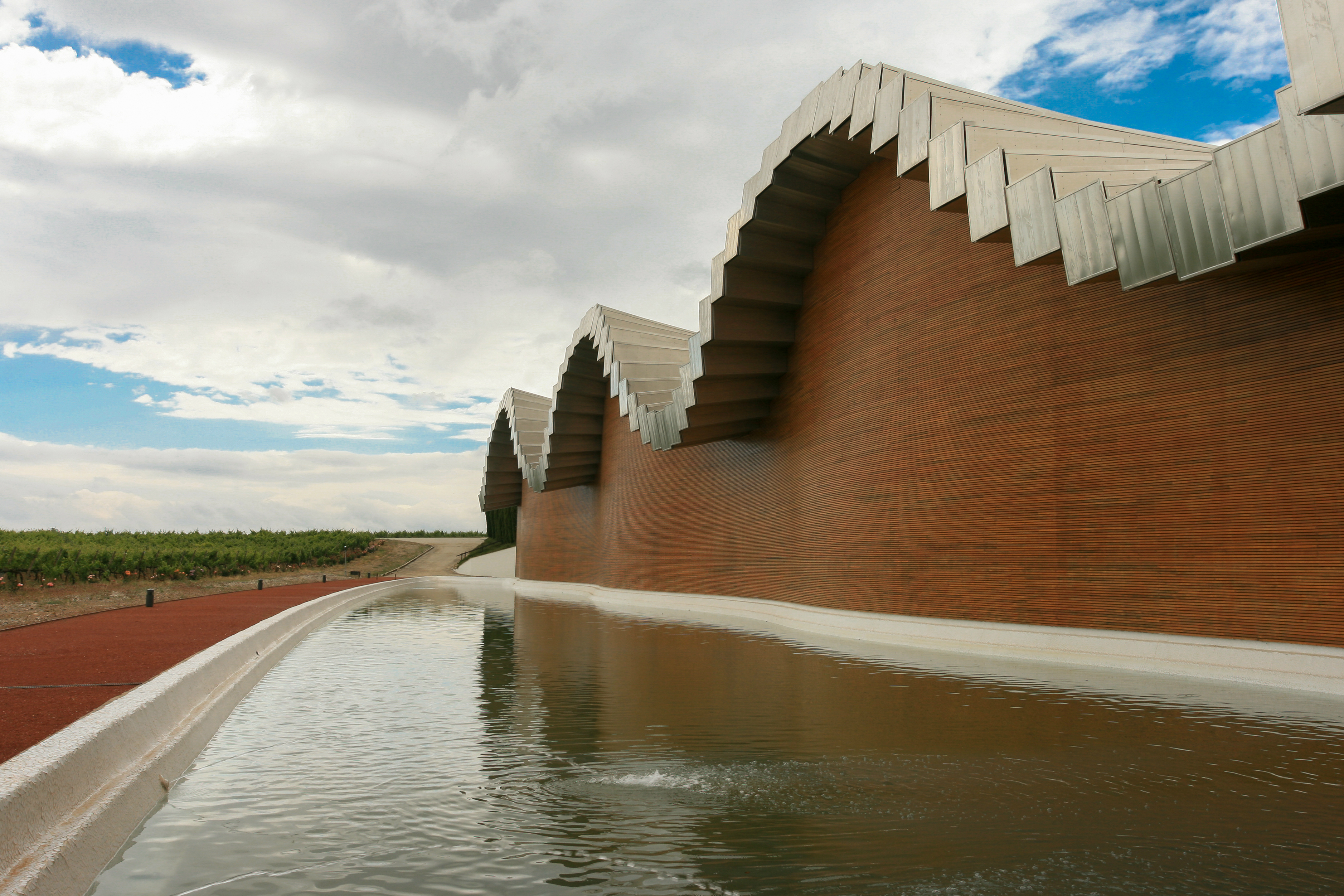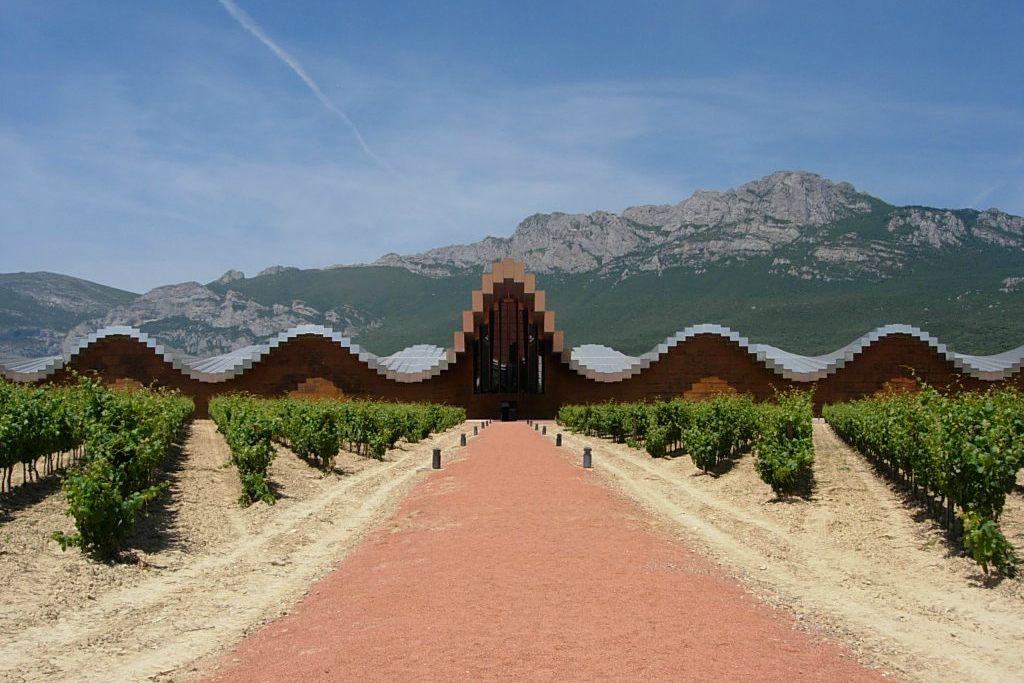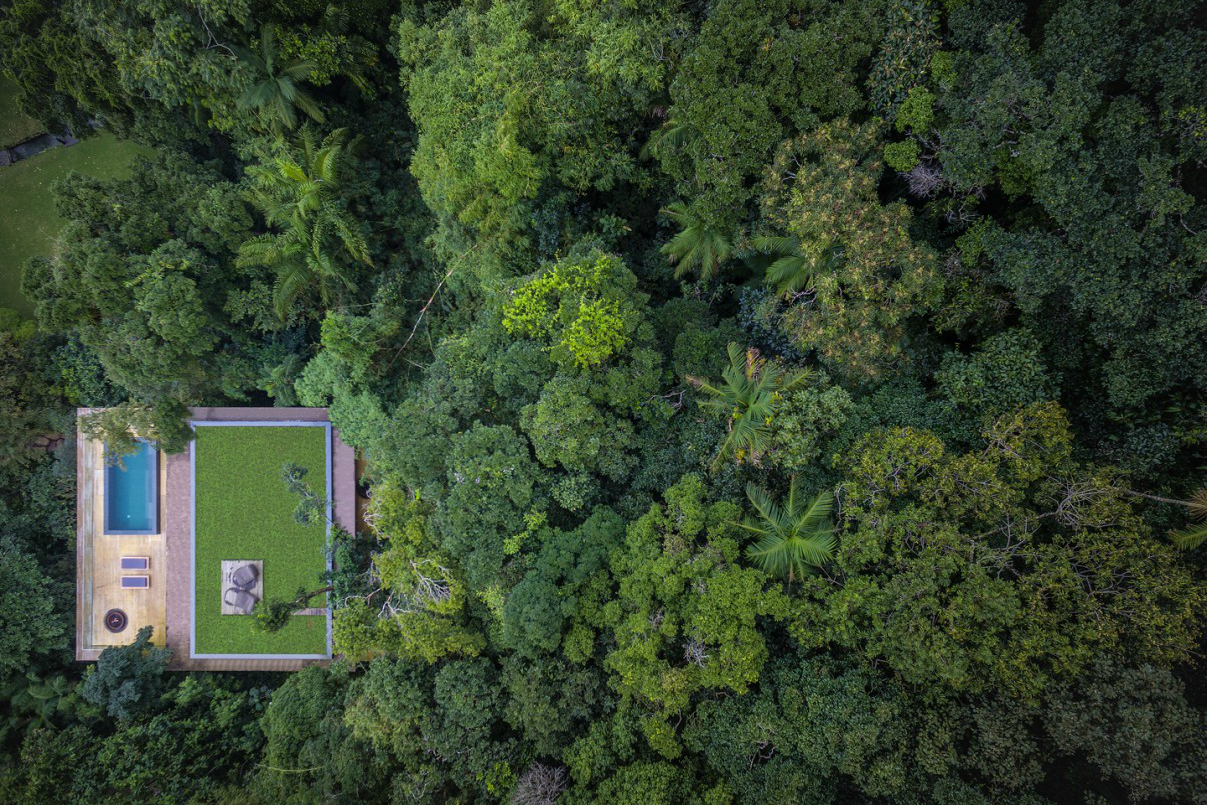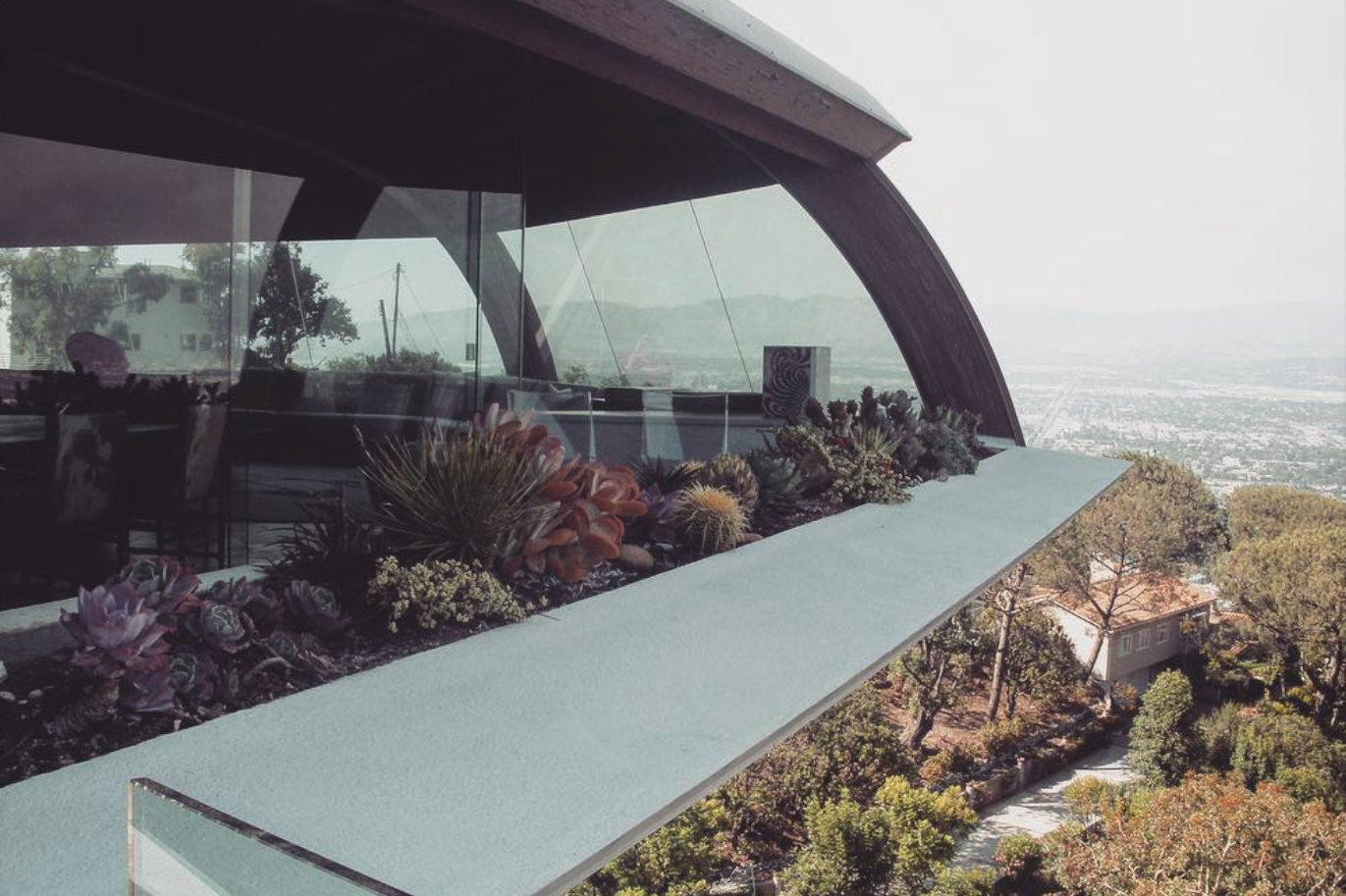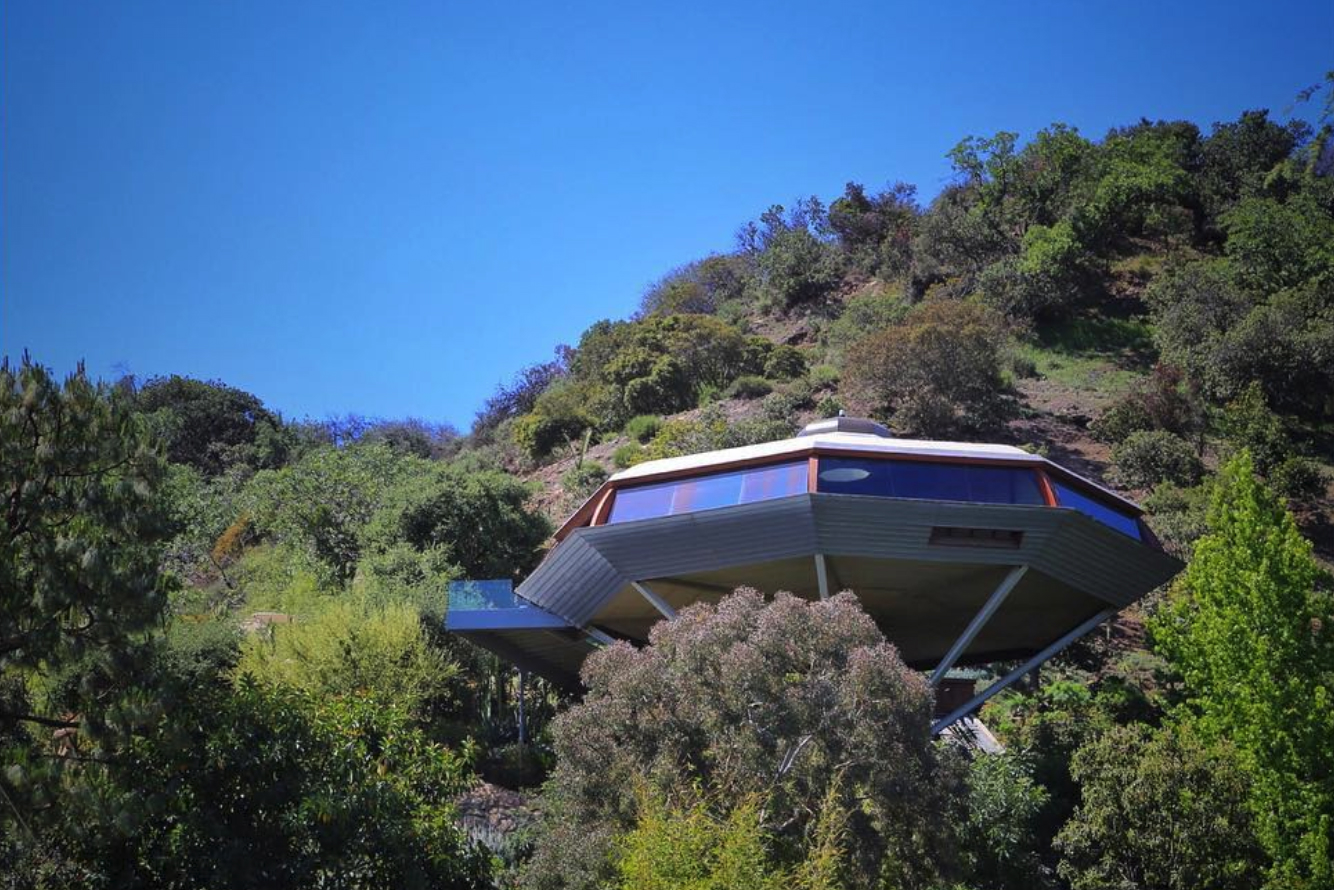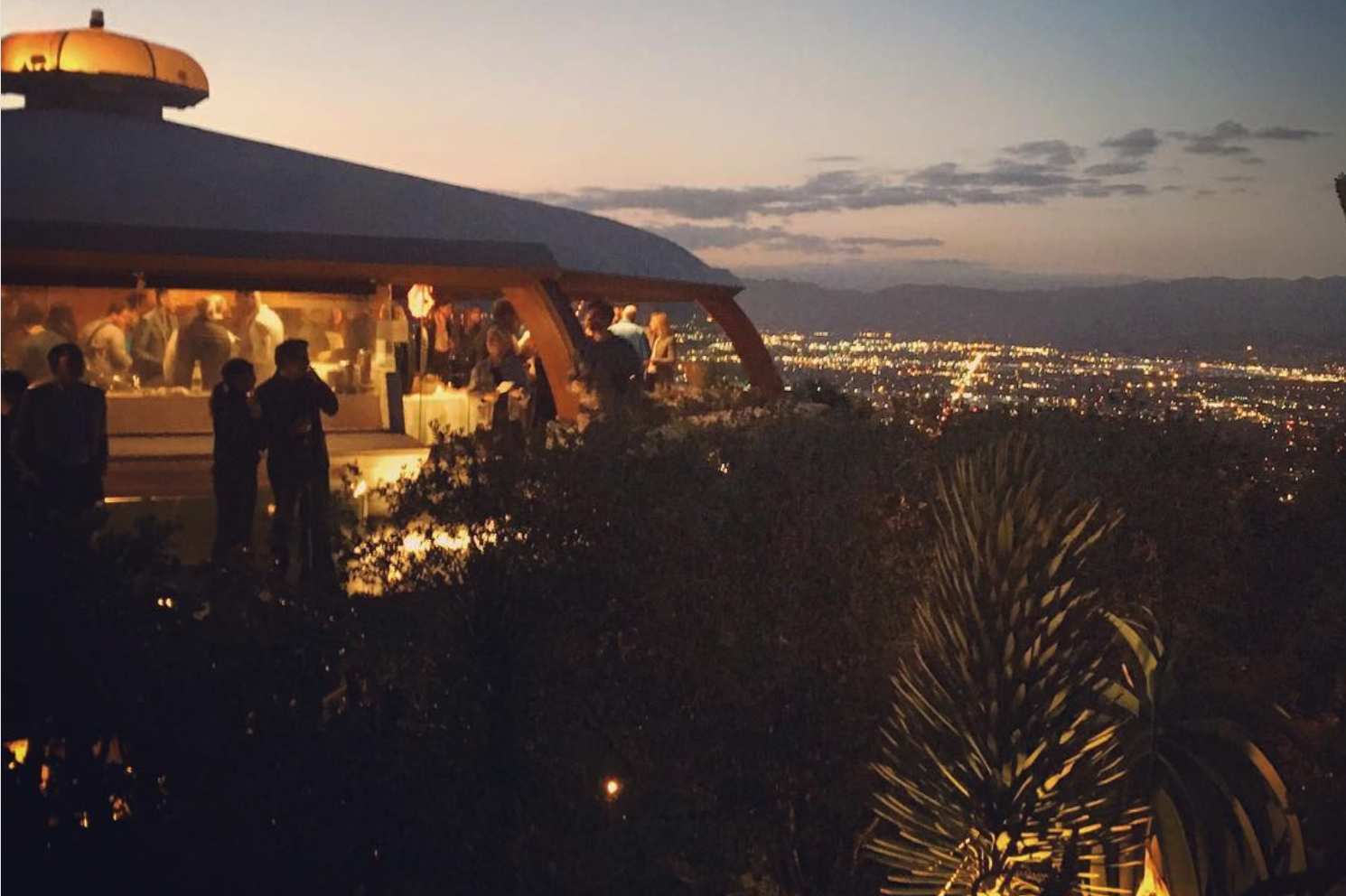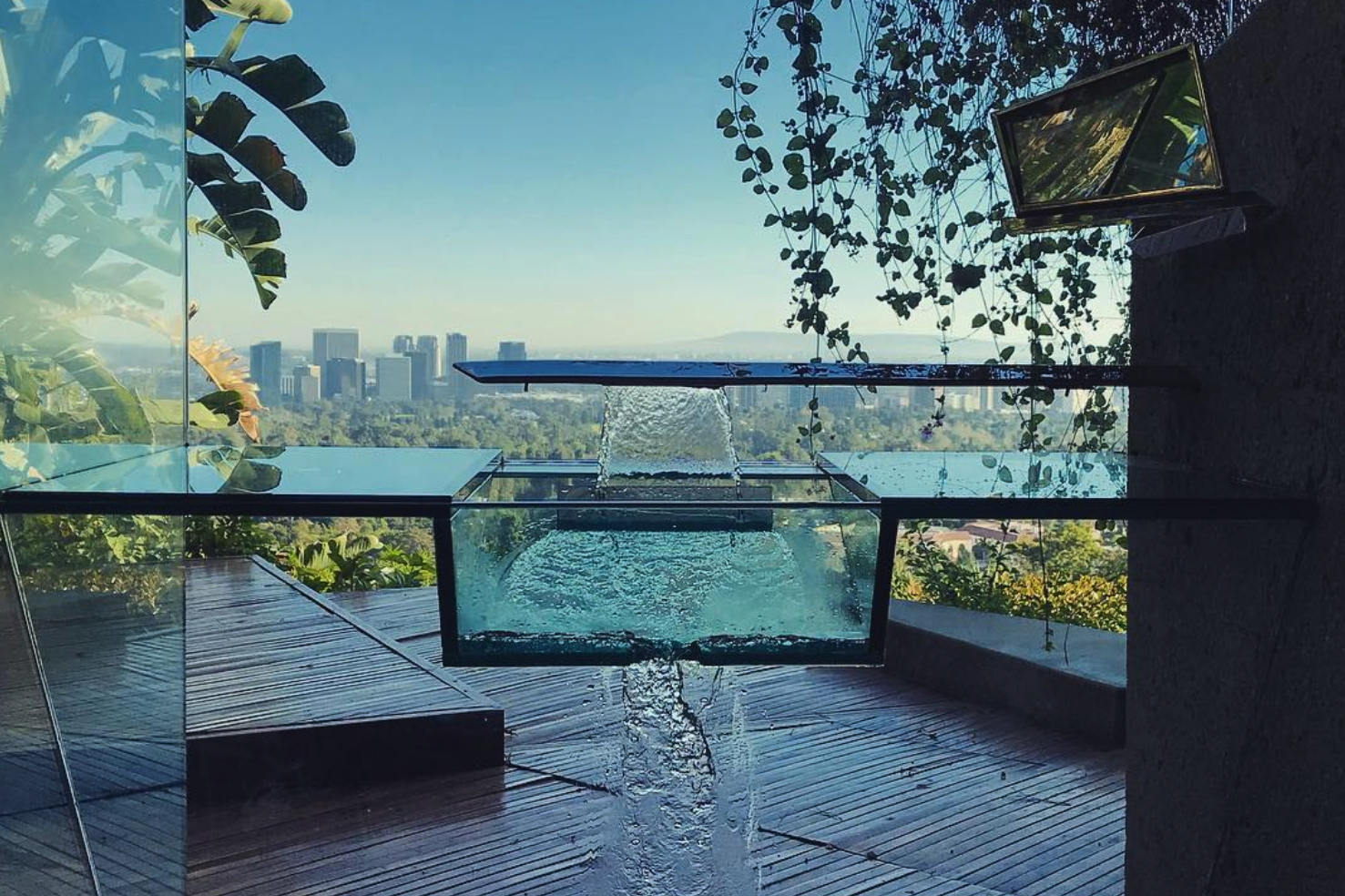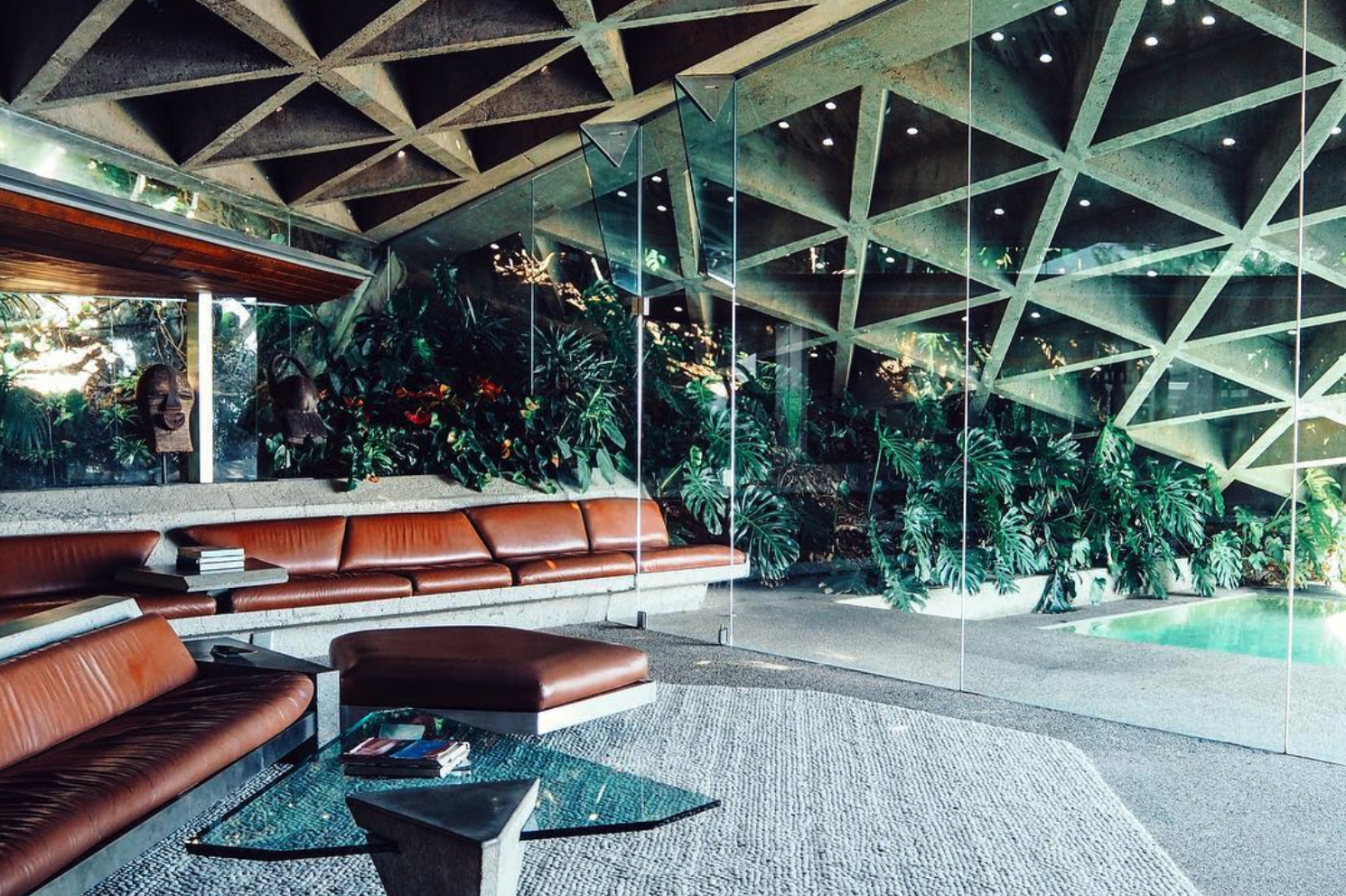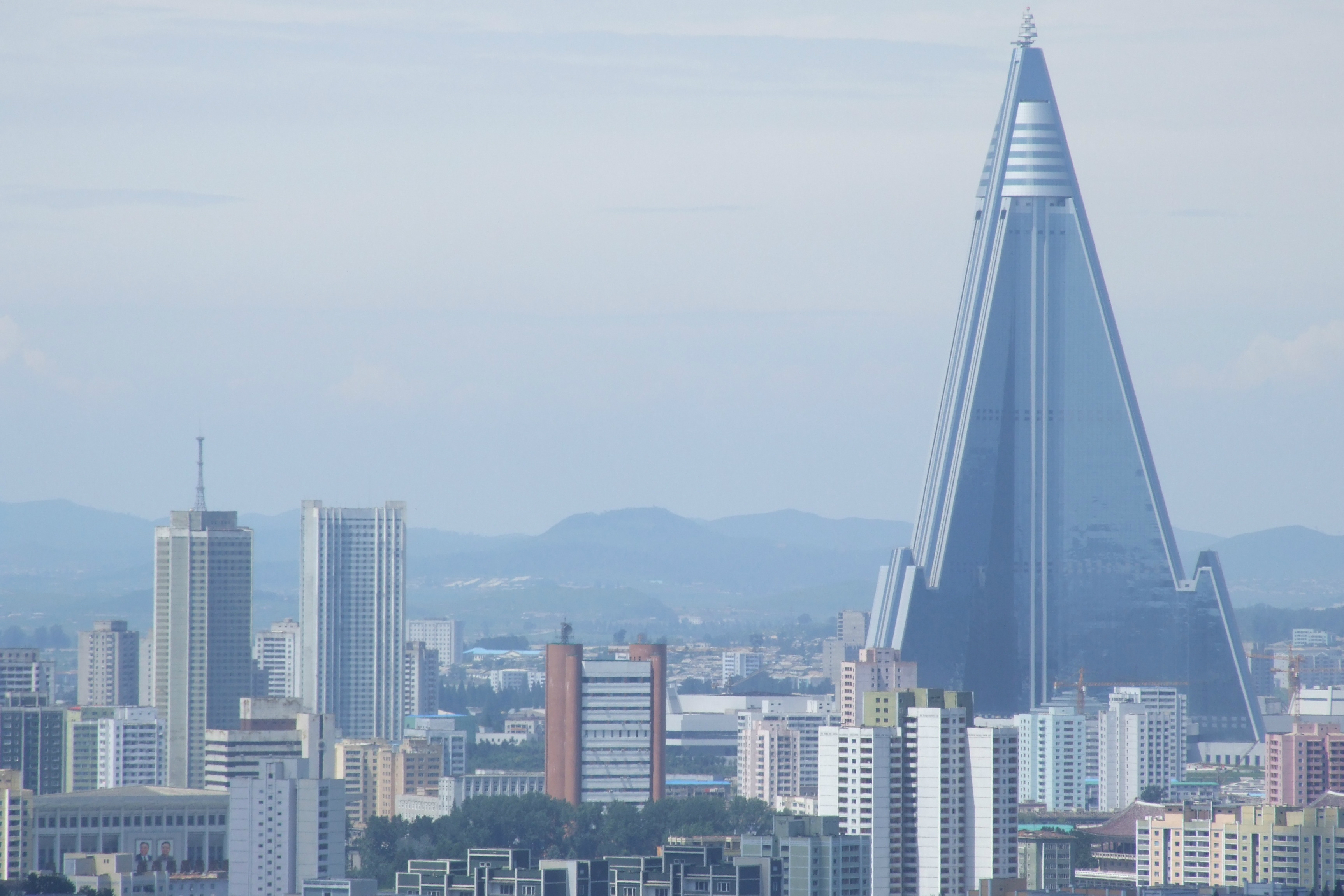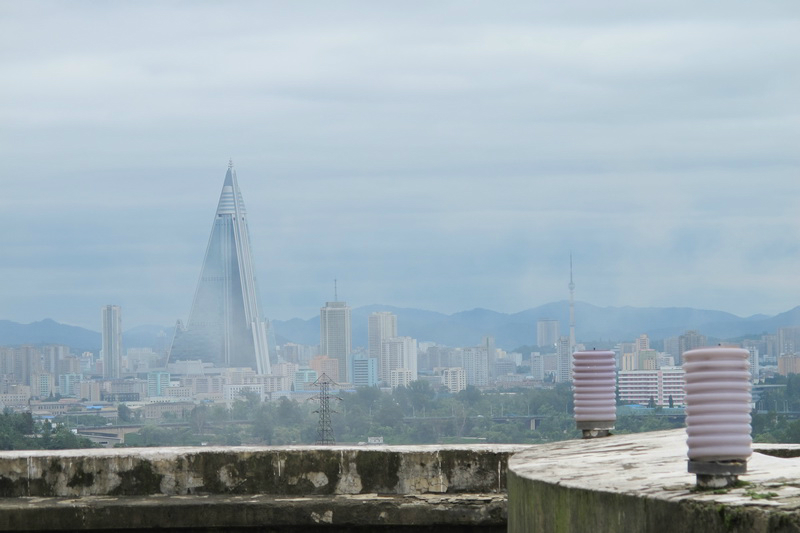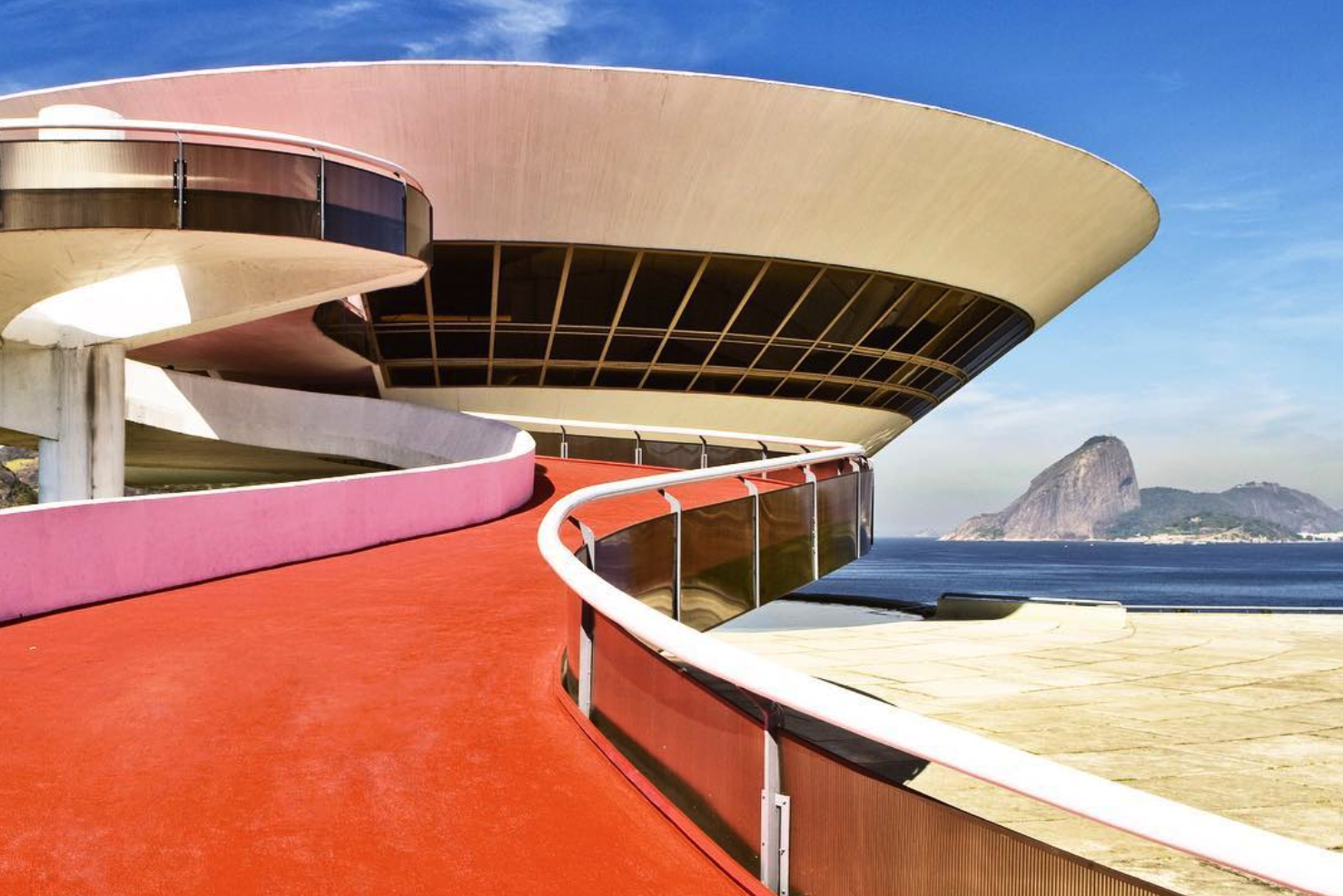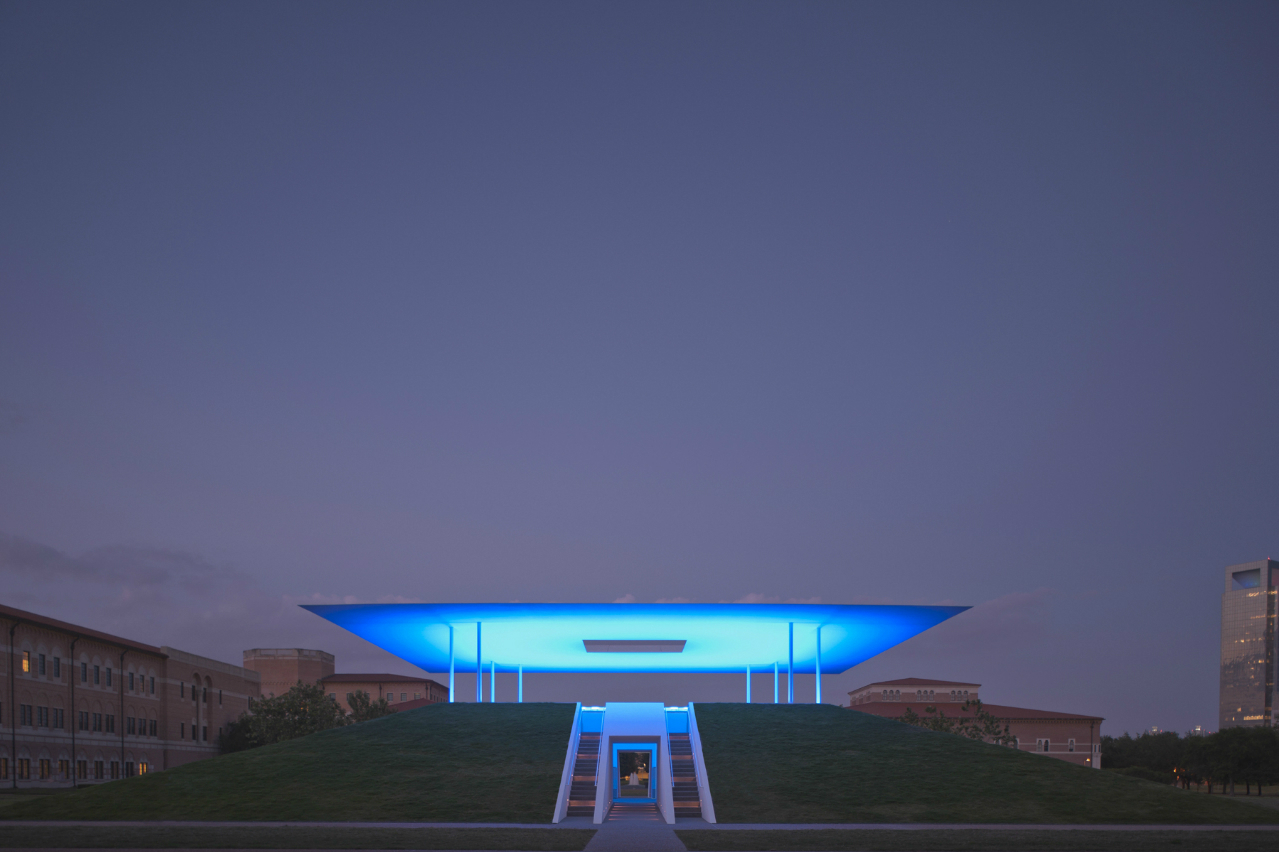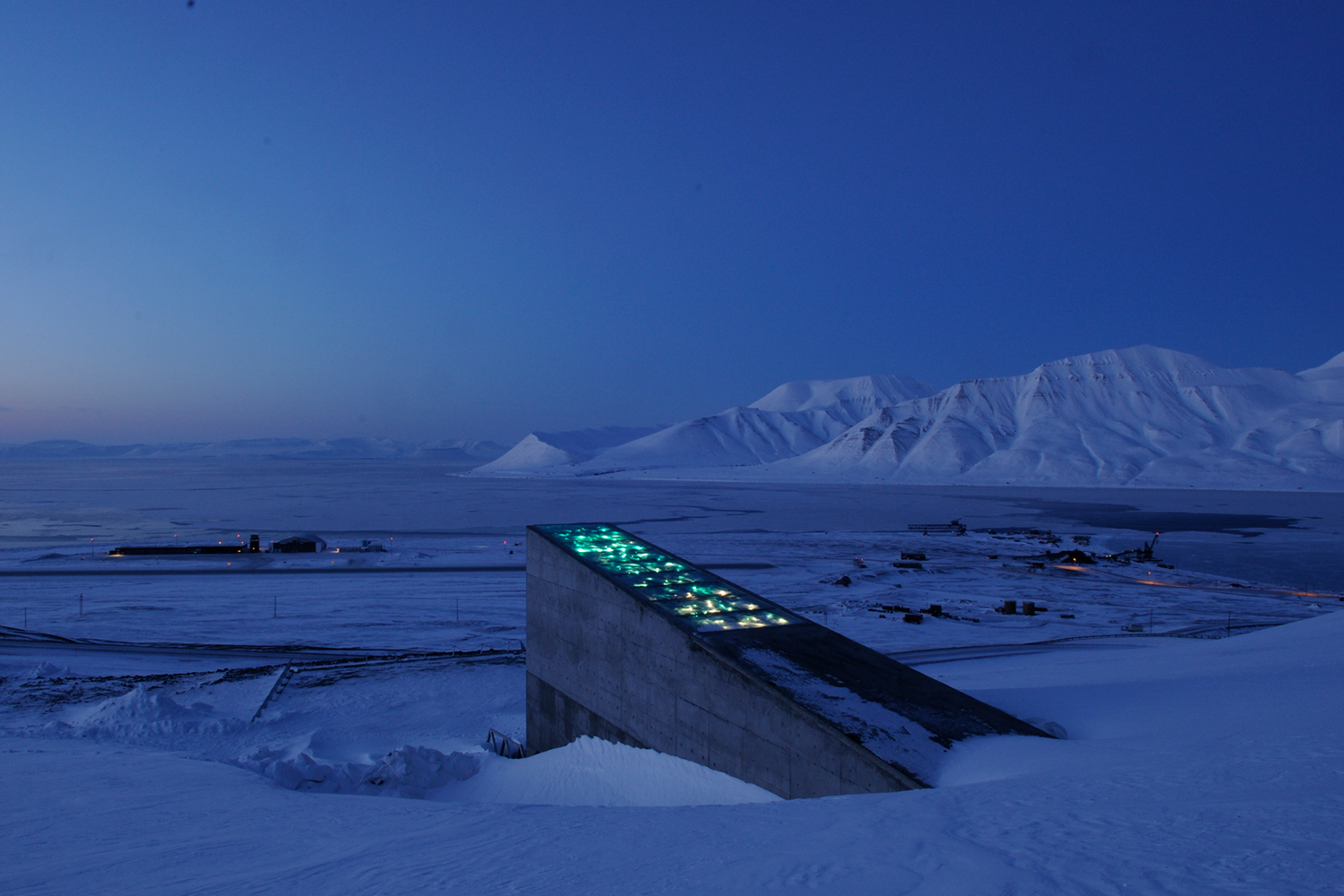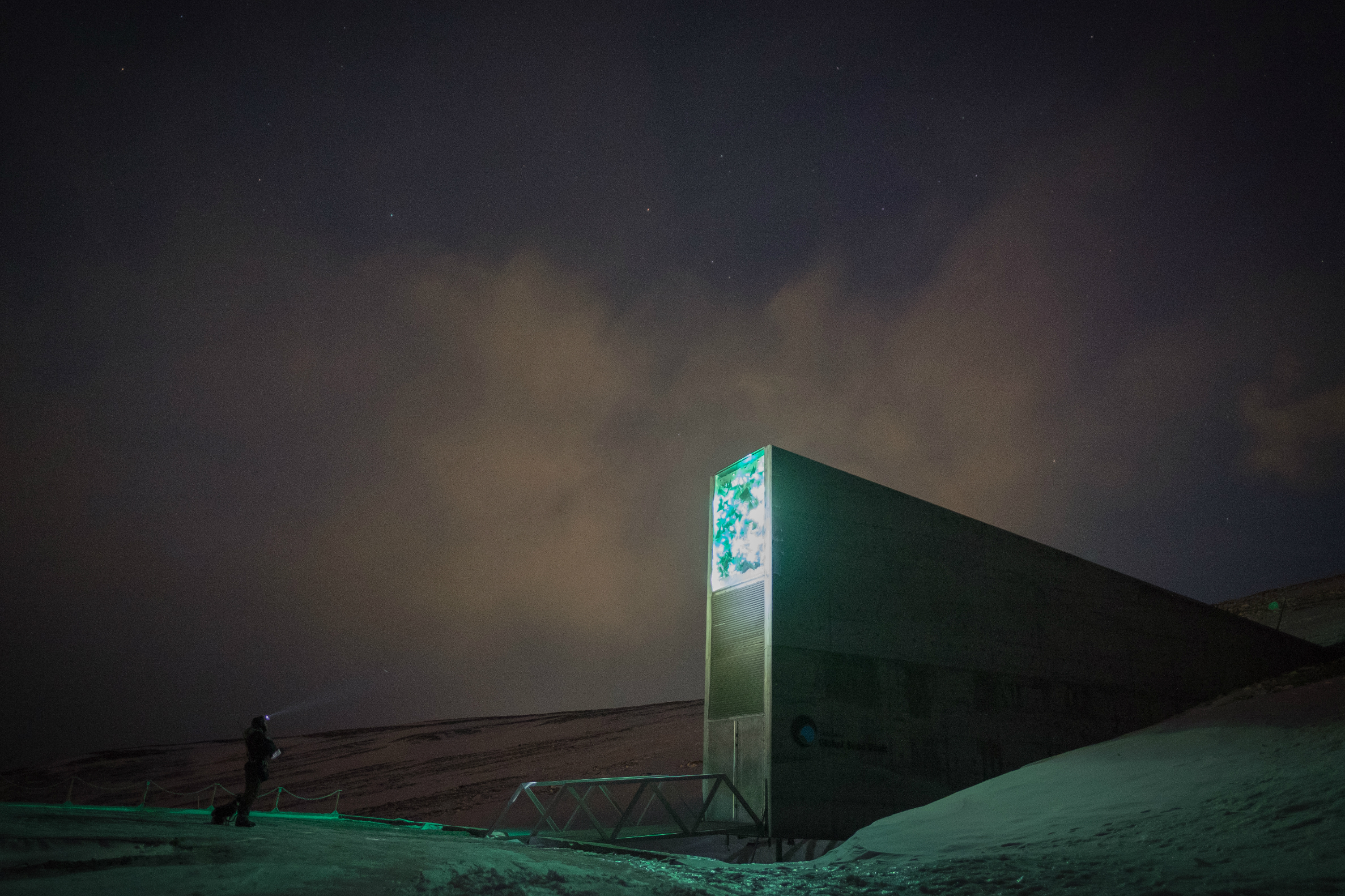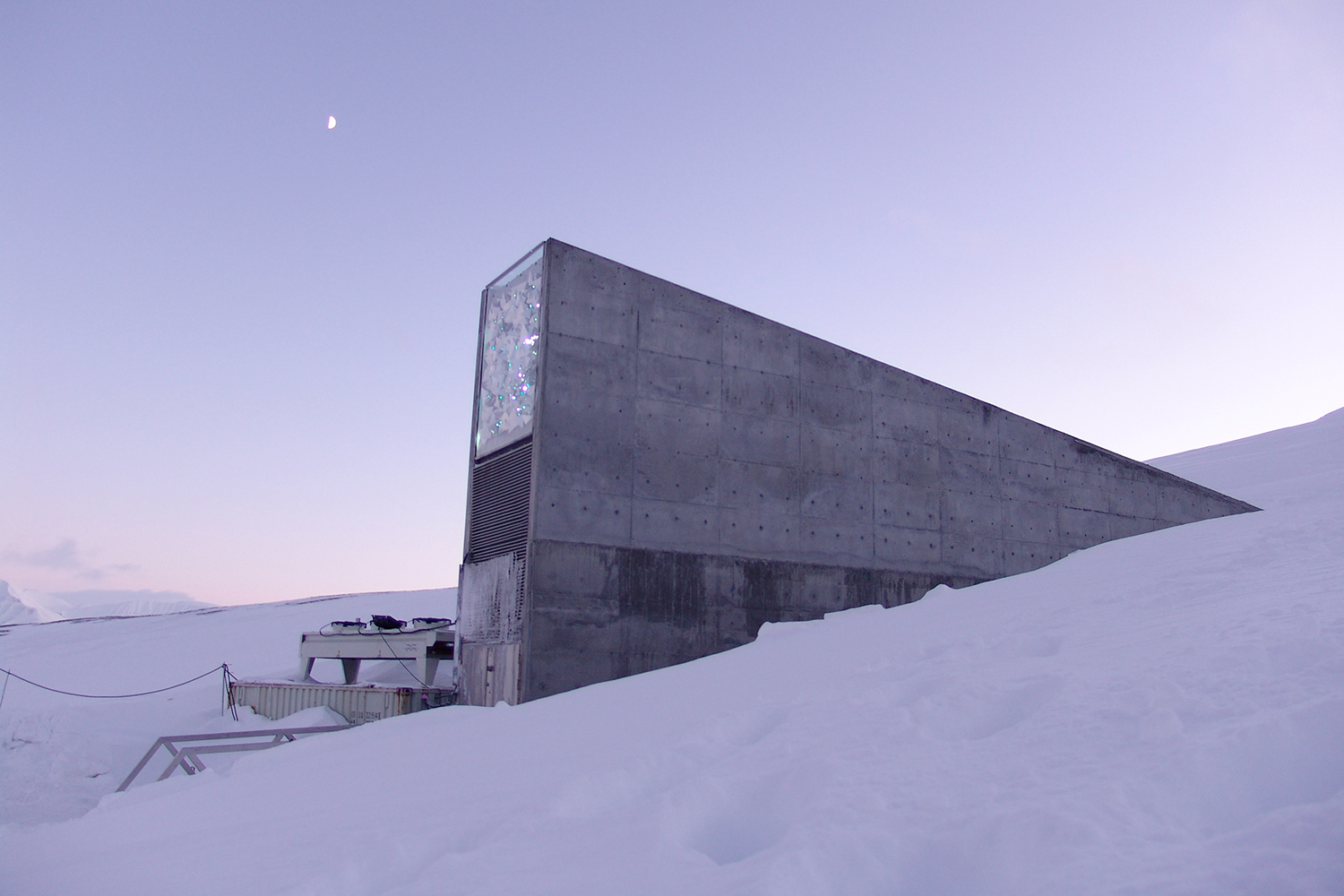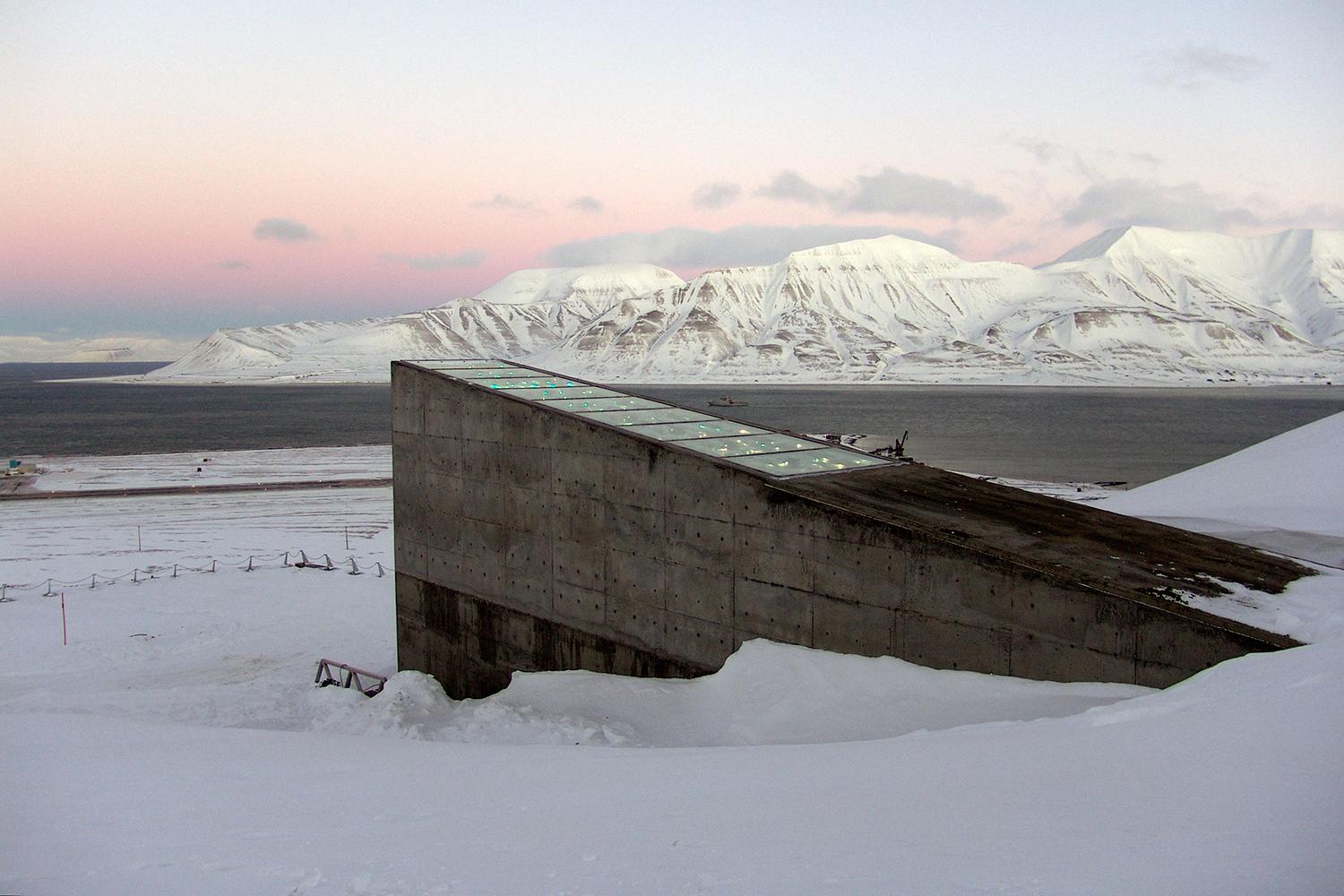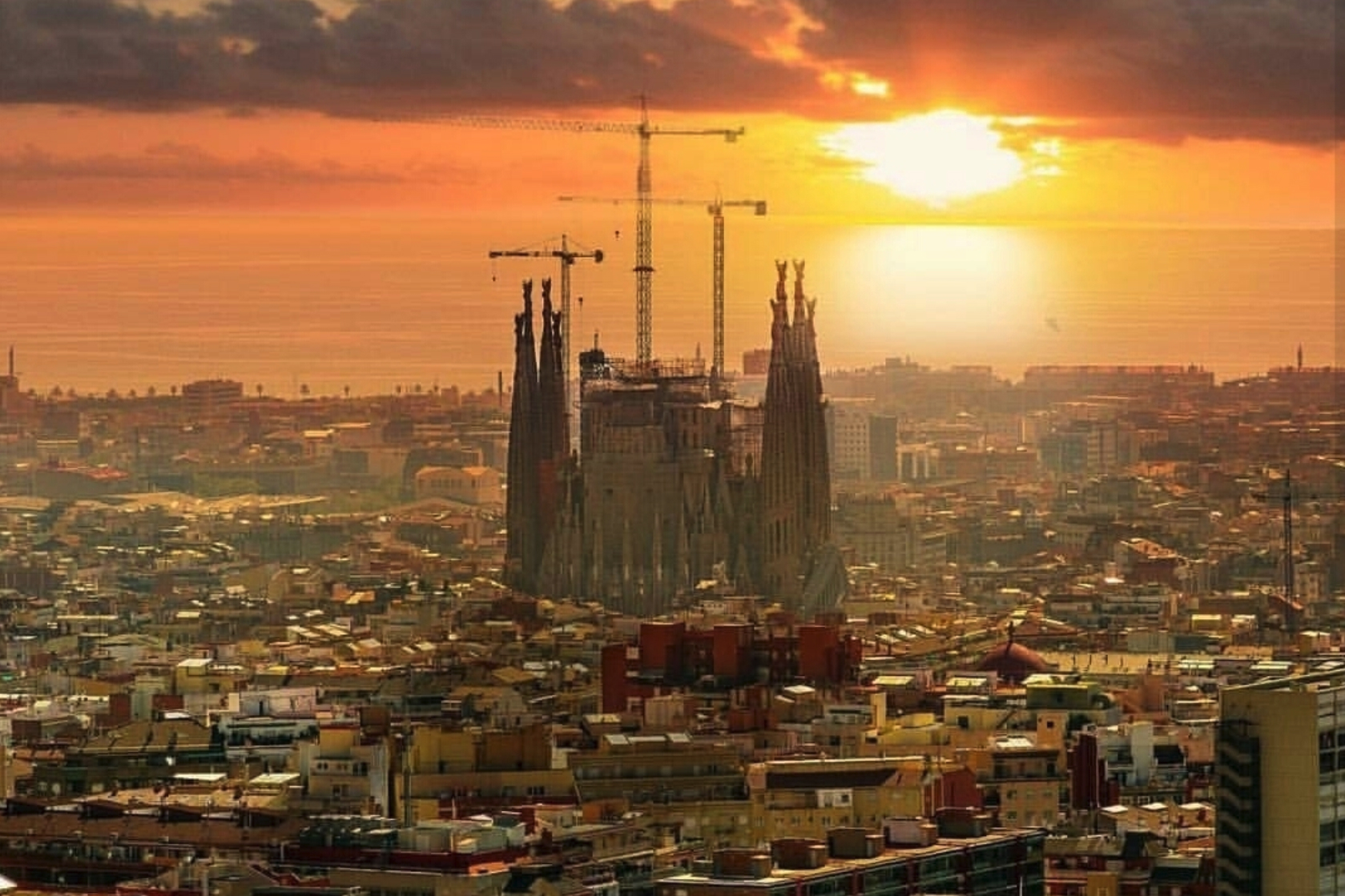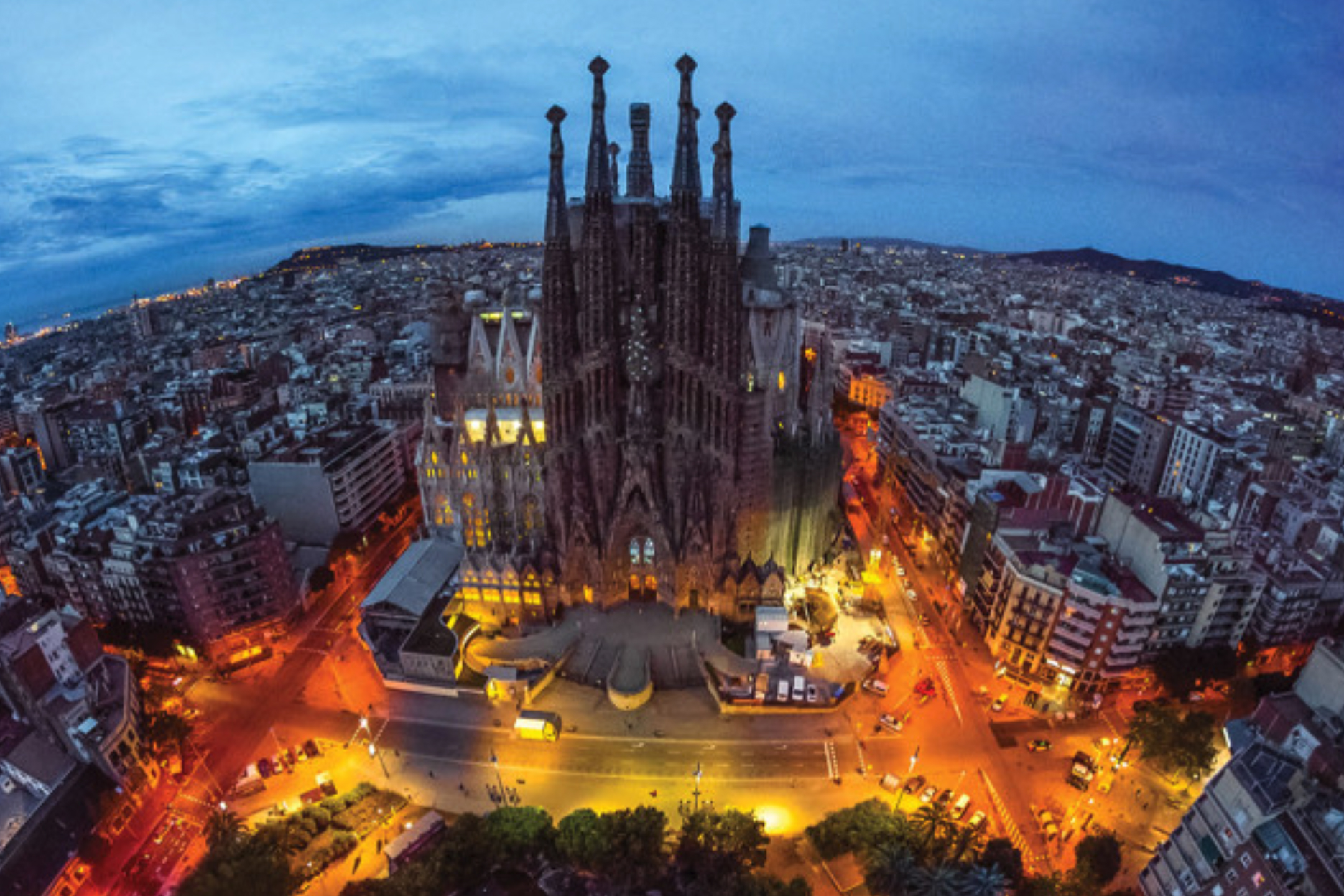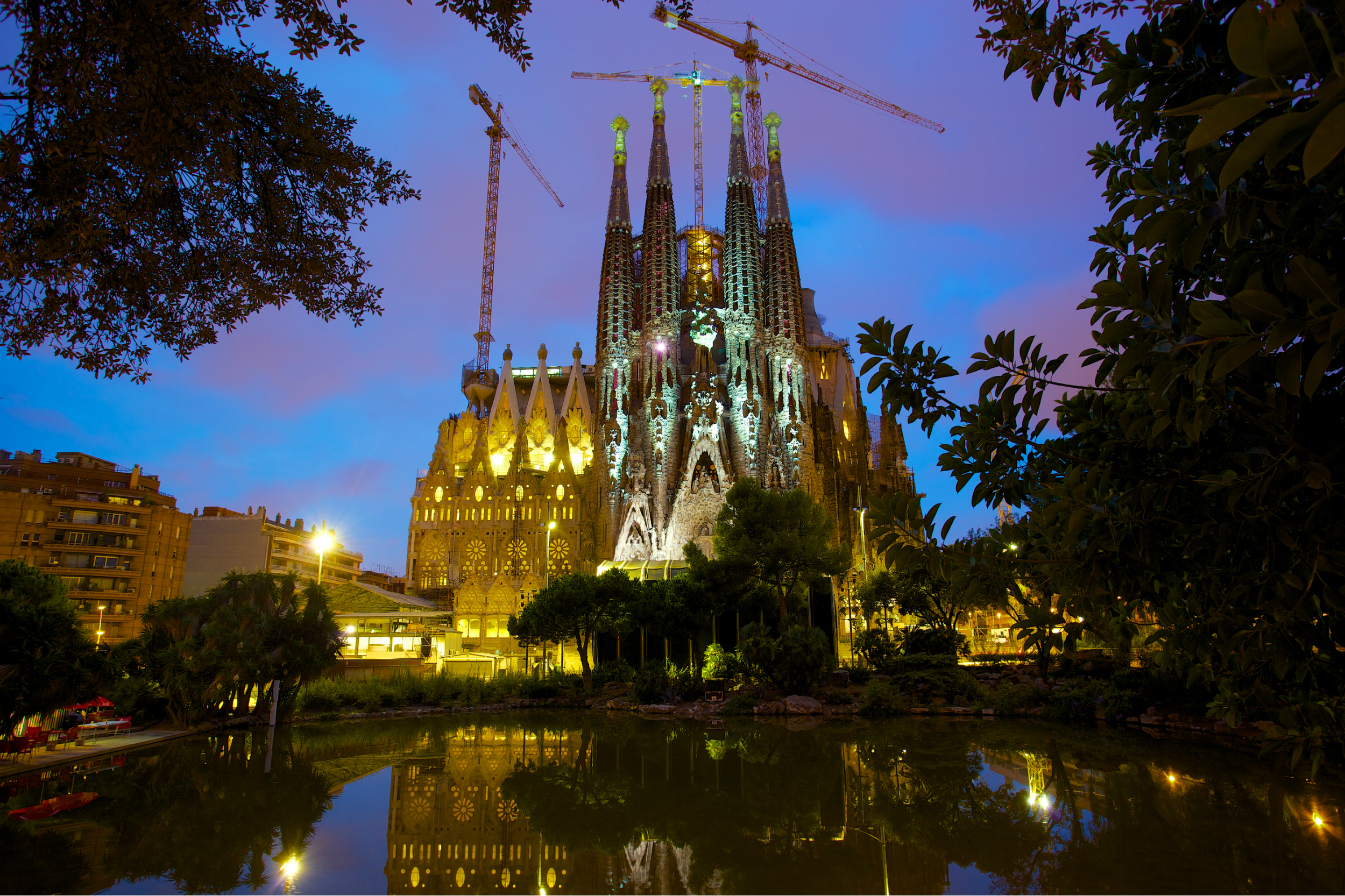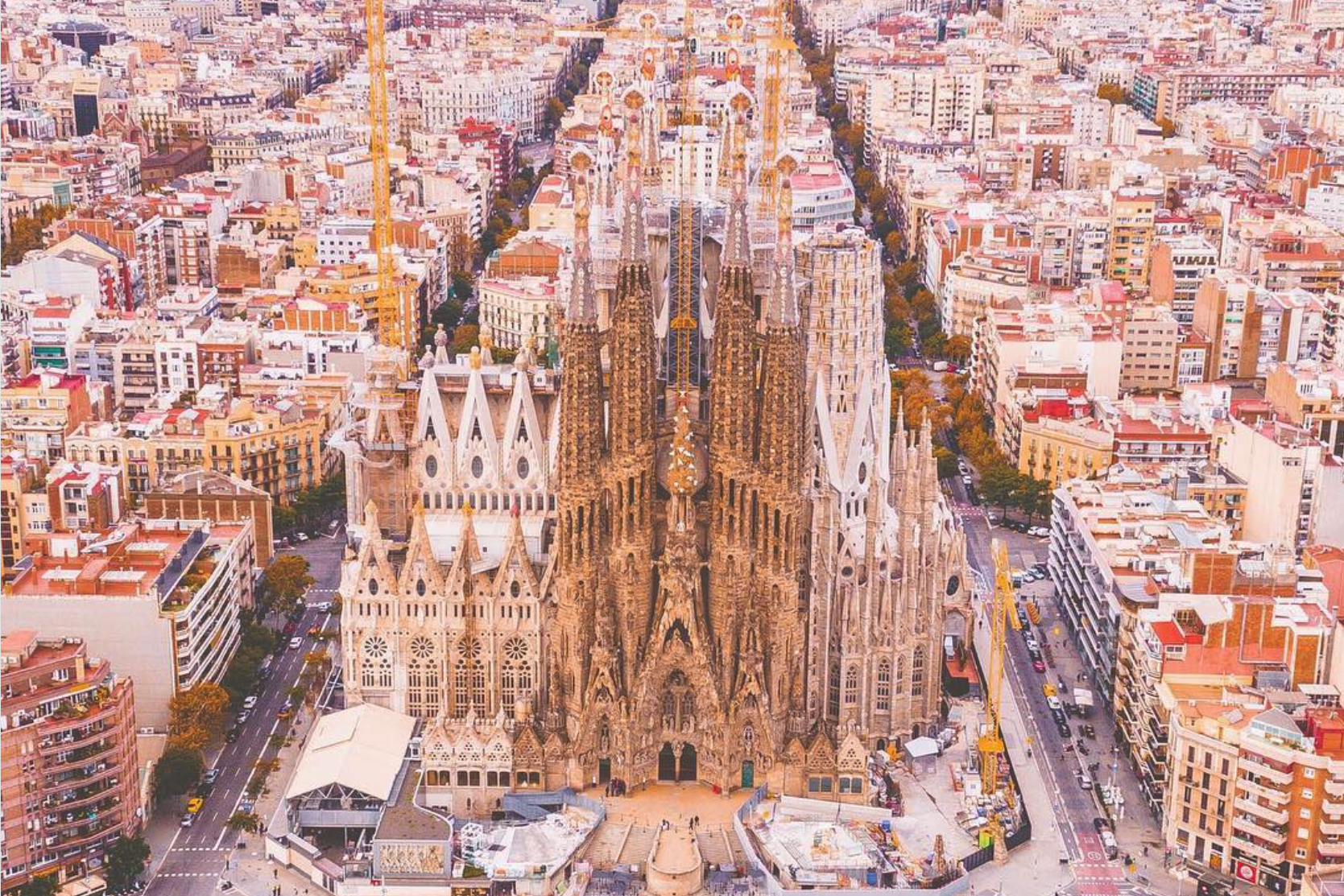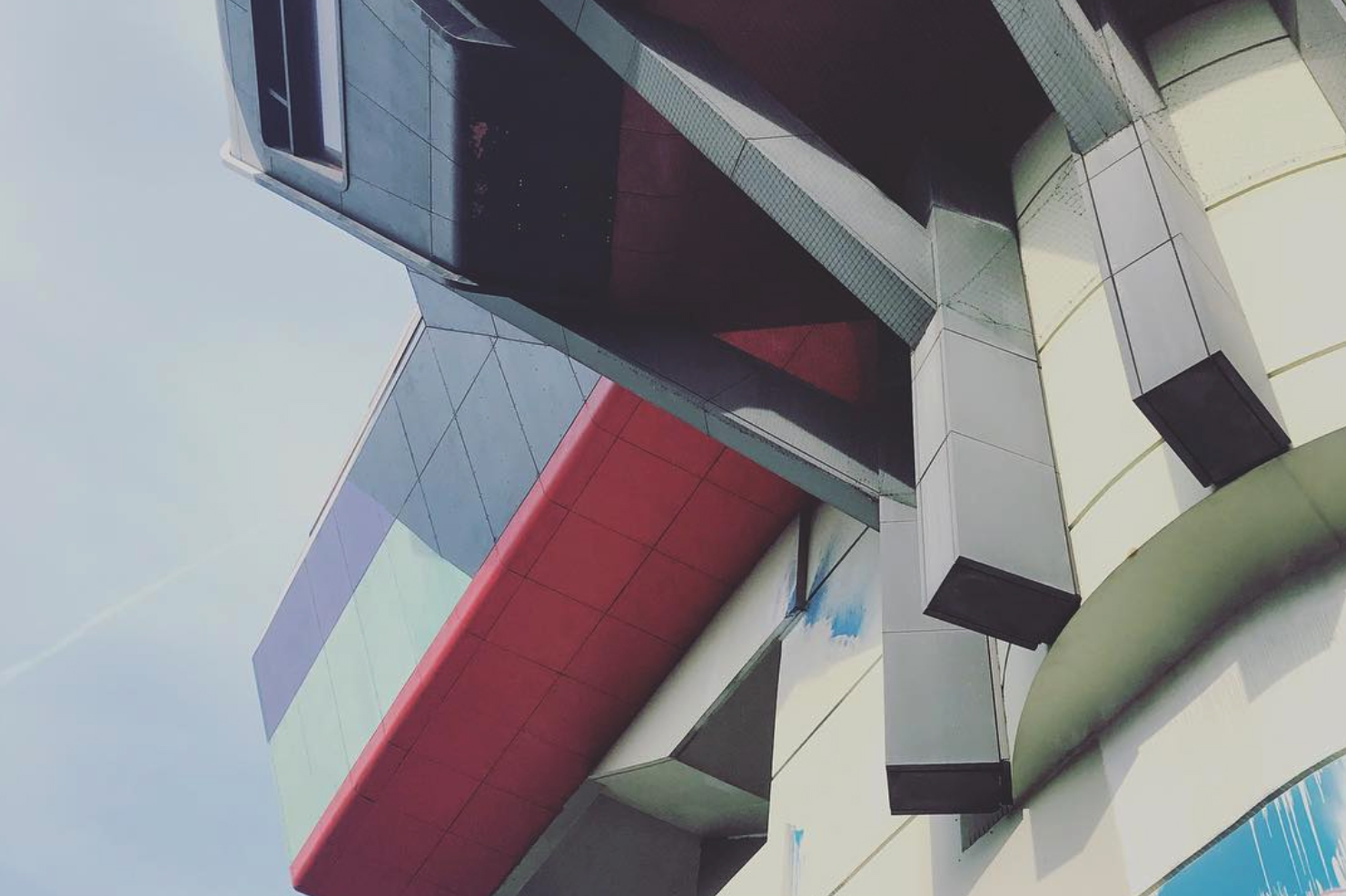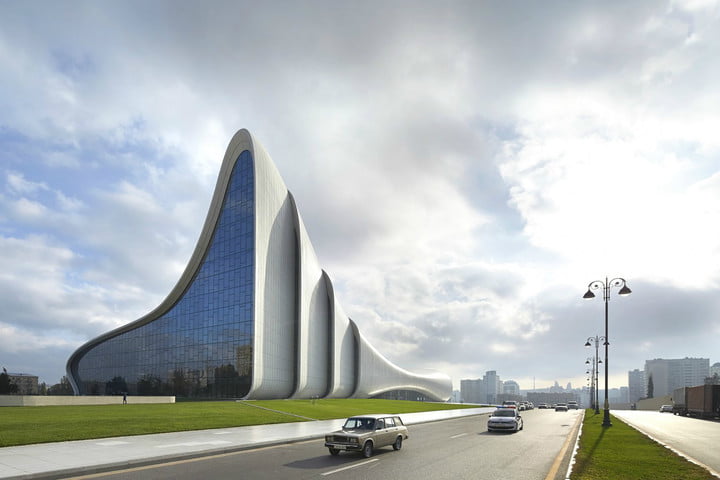
Since claiming dominion over this drifting space rock, humans have peppered the planet with abodes and edifices both large and small. Over the past century, we scraped the sky with awe-inspiring stacks of steel — but sometimes bigger doesn’t always mean better. We’ve scoured atlas and encyclopedia alike — and of course the trusty internet — to find the most impressive buildings around the globe. From a flying saucer seemingly afloat in the Hollywood Hills to a Spanish cathedral more than a century in the making, here are our picks for the 17 coolest buildings on the planet.
W350 (Tokyo, Japan)
From Japanese construction company, Sumitomo Forestry, comes a 70-story skyscraper in Tokyo — made almost entirely out of wood. The planned structure, which is expected to be completed in 2041, will be made of 90 percent wooden materials. Known as the W350 Project, the skyscraper will tower nearly 1,200 feet in the air, and include both residential and public spaces. The eco-friendly building is projected to cost $5.6 billion, and is set to be completed on the company’s 350th anniversary. Buildings like this are part of a growing trend around the world, one that is looking to bring a more natural aesthetic to the glass-and-steel construction that proliferates modern architecture.
Heydar Aliyev Centre (Baku, Azerbaijan)
Azerbaijan was previously part of the Soviet Union and much of the capital, Baku — as well as much of the rest of the country — remains dominated by the lingering architecture of the bygone era. Once Azerbaijan gained independence in 1991, the government made it a point to break with the Soviet Modernism style by investing heavily in urban architectural development. Following a design competition in 2007, Zaha Hadid Architects was chosen to oversee the design of the Heydar Aliyev Centre. Today, the stunning Heydar Aliyev Centre exists as a true testament to this long-term city planning initiative.
Bosco Verticale (Milan, Italy)
The Bosco Verticale — or pair of so-called “vertical forests” — was completed in the Isola neighborhood of Milan in 2014. The Architecture firm Boeri Studio situated more than 600 tall trees, 500 smaller trees, and 2,500 plants and shrubs along terraces on all four sides of the two buildings. Based on estimates, these plants could remove about 25 tons of carbon dioxide from the atmosphere annually while adding roughly 130 pounds of oxygen each day. The Bosco Verticale incorporates the number of trees one would find in a 10,000-square meter section of forest, according to the studio.
Benedictine abbey/Mont Saint-Michel (Normandy, France)
Sure, the Norman Benedictine abbey atop the Le Mont-Saint-Michel is quaint, but it’s really the rocky islet itself, Mont Saint-Michel, that pushes this World Heritage site to near the top of our list. Mont Saint-Michel is set just off the coast of Normandy and has been one of the most popular tourist destinations in France for years. During low tide, the surrounding waters subside allowing visitors to wander around the surrounding bay. In 2014, a new bridge connecting Mont Saint-Michel to the mainland was constructed to replace the 135-year-old causeway.
CCTV Headquarters (Beijing, China)
Auditorio de Tenerife (Santa Cruz de Tenerife, Spain)
It should really come as no surprise that Spanish architect, Santiago Calatrava, has multiple designs featured in this roundup. That said, the Auditorio de Tenerife — situated on the Tenerife Island just off the coast of Moroccan — is one of Calatrava’s most stunning works. The iconic half crescent seemingly jetting from the Atlantic ocean shields the amphitheater and adds an overall aesthetic balance to the structure.
Lotus Temple (Dehli, India)
Iranian architect Fariborz Sahba oversaw construction of the Lotus Temple, and once consecrated the facility opened in late 1986. The design itself is based on the significance of the number nine in the Bahá’í faith. In total, the lotus is made of 27 individual petals and each of these are designed in a series of three forming nine total sides and another group of nine form three rings in the center of the structure. A ceiling comprised of glass and steel allows natural daylight to illuminate the interior prayer hall.
Bodegas Ysios (Laguardia, Spain)
The Bodegas and Bebidas Group commissioned renown architect Santiago Calatrava to design the Bodegas Ysios as a “temple dedicated to wine.” The winding aluminum roof and cedar exterior seemingly undulate into the surrounding foothills along the Sierra de Cantabria.
Jungle House (Guarujá, Brazil)
While the bulk of these buildings exist as museums, temples, or commercial space, the Jungle House is one of the few actual homes to make our final cut. Nestled in Guarujá, Brazil, the Jungle House is the brainchild of design studio Studio MK27. Completed in 2015, the home features three floors, six bedrooms, an infinity swimming pool, and a series of verandas allowing for panoramic views of the lush Brazilian rainforest.
The Chemosphere (Los Angeles, California)
Architect John Lautner designed the so-called Chemosphere in 1960 and the UFO-shaped home located just off Mulholland Drive was once revered as “the most modern home built in the world” by the Encyclopedia Britannica. Rather than undertaking the daunting — not to mention expensive — engineering challenge of settling the home along the 45-degree slopes of the Hollywood Hills, Lautner instead choose to rise above the landscape and situate the home on a single 30-foot concrete column. Overlooking downtown LA, the spectacular sight wasn’t lost on some of Hollywood’s filmmaking elite — the home has appeared in numerous films over the years including Body Double, Charlie’s Angels and even immortalized in an episode of The Simpsons.
The Sheats Goldstein residence (Los Angeles, California)
Just down the road from The Chemosphere, John Lautner put the finishing touches on this quintessential bachelor pad in 1963. Originally, the Sheats-Goldstein house was designed for the Sheats family and later purchased by James Goldstein. Over the years, the residence has appeared in a number of films including an installment of the Charlie’s Angels franchise, Bandits, even making a cameo in Snoop Dogg’s 2005 summer anthem Let’s Get Blown, If this looks like Jackie Treehorn’s pad from The Big Lebowski, that’s because it is.
Ryugyong Hotel (Pyongyang, North Korea)
The rather sinister-looking Ryugyong Hotel is located in the not so quaint downtown of Pyongyang, North Korea. Construction on the massive 105-story complex began in 1987 and was scheduled to open — based on some rather shoddy logistics and lofty ambitions — sometime in late 1989. After some hampered expectations, officials decided on a grand opening ceremony to coincide with the 100th anniversary of the birth of “Eternal President” Kim Il-Sung in 2012 and sadly enough that date too came and went to no avail. Today, 30 years later and counting, the hotel is still incomplete — leaving it with the illustrious and specific title of “tallest unoccupied building in the world.”
In 2016, it was reported that interior lighting had been switched on but currently, we will have to wait before we can enjoy the continental breakfast at the so-called “Hotel of Doom.” Thus far the hotel has an estimated price tag of $750 million which is just a drop in the bucket considering the Hermit Kingdom spends $10 billion a year — or potentially up to a quarter of its annual GDP — on constructing apocalypse toys and very lifelike wooden mockups of said toys just for fun.
Niterói Contemporary Art Museum (Niterói, Brazil)
Brazilian architect Oscar Niemeyer designed more than 500 projects during his illustrious career. That said, Niemeyer himself once claimed the Niterói Contemporary Art Museum depicted above, known commonly as the MAC, ranked near the top of his personal favorites. Budding from the cliffside on the Guanabara Bay, the swanky saucer grants guests glimpses of the city of Niterói and Sugarloaf Mountain in the distance.
Twilight Epiphany Skyspace (Houston, Texas)
Artist James Turrell and the firm Thomas Phifer and Partners created the Twilight Epiphany Skyspace for Rice University and exists on campus just adjacent to the school of music. A network of LEDs react to the rising and setting sun to create unique light shows as these rays fluctuate. The morning show begins roughly 40 minutes before sunrise and the evening “performance” starts just as the sun begins to set.
Svalbard Global Seed Vault (Svalbard, Norway)
We covered the Svalbard Global Seed Vault numerous times in the past and while the sleek building tucked neatly into a Norwegian mountain itself merits a spot on this list, it’s what’s inside that really stands out. The bulk of the complex has been designed to function as a “fail-safe seed storage facility, built to stand the test of time — and the challenge of natural or man-made disasters,” per the official website. You know, for whenever Mother Nature inevitably purges us from the planet.
Inside of the vault resides a collection of more than 865,000 varieties of seeds to remind the transhumans or alien species that one day walks the charred Earth, just how OK this place used to be. As a real bellwether sign o’ the times, the facility is pending a massive multimillion-dollar renovation after the entry tunnel flooded following the warmest year on record. In 2015, the seed vault received its first seed withdrawl request as a result of the ongoing Syrian civil war. It looks like that whole post-people planet might be just around the proverbial corner.
Basílica de la Sagrada Família (Barcelona, Spain)
The groundbreaking of the majestic Basílica de la Sagrada Família began in the late 19th century under the guidance of architect Antoni Gaudí and after more than 130 years, the colossal cathedral still remains incomplete. Construction on six new towers began in 2015, the tallest of which is set to be more than 560 feet high and once completed these stats will give the structure the title of tallest religious structure in Europe.
Gaudí was once asked why construction on his magnum opus was taking so long and the architect slyly quipped: “My client (God) is not in a hurry.” As of 2015, the cathedral was roughly 70 percent complete and the project is currently on pace to reach completion in 2026 — a year that just so happens to be centenary of Gaudí’s death. Will the team make this audacious deadline? We’ll just have to wait and see…
Bierpinsel (Berlin, Germany)
Well, sometimes something is just so ugly it’s somehow charming. So in walks iconic Brutalist structure, the Bierpinsel. The architecture power couple Ralph Schüler and Ursulina Schüler-Witte created this multi-colored brute in the 1970s. At its tallest point, Bierpinsel stands 46 feet above the Steglitz neighborhood and has served as everything from a restaurant, a cafe, and even a nightclub at one point. Nonetheless, the Bierpinsel has been vacant since 2006 and despite it’s clubbing past, the complex is now on the market as a “residence.” This four bedroom, four bath home with more than 12,000 square feet of living space can be yours for the just under $4 million. Get it.
Dallon Adams contributed to this post.
